My third crafty project of the year is Hegemon’s Spear (霸王槍 Ba Wang Qiang), from 馬榮成 Ma Wing-Shing’s manhua adaptation of 古龍 Gu Long’s Seven Weapons novel franchise. Although it’s a wuxia classic, the story is not my favorite. Most of its characters and weapons are just so-so, as well. However, this spear captivated me from the first frame and has been among my all-time favorite fantasy weapons. Despite its impractical and structurally unsound design, it’s uniquely beautiful and badass.
I’ve been such a fan of this Hegemon’s Spear that I’ve got a miniature replica of it. It’s moved with me from state to state for 20 years and has always been on display somewhere. The thought of having a life-sized version of it sparked endless excitement for my inner child. With my mind set, I got to work…

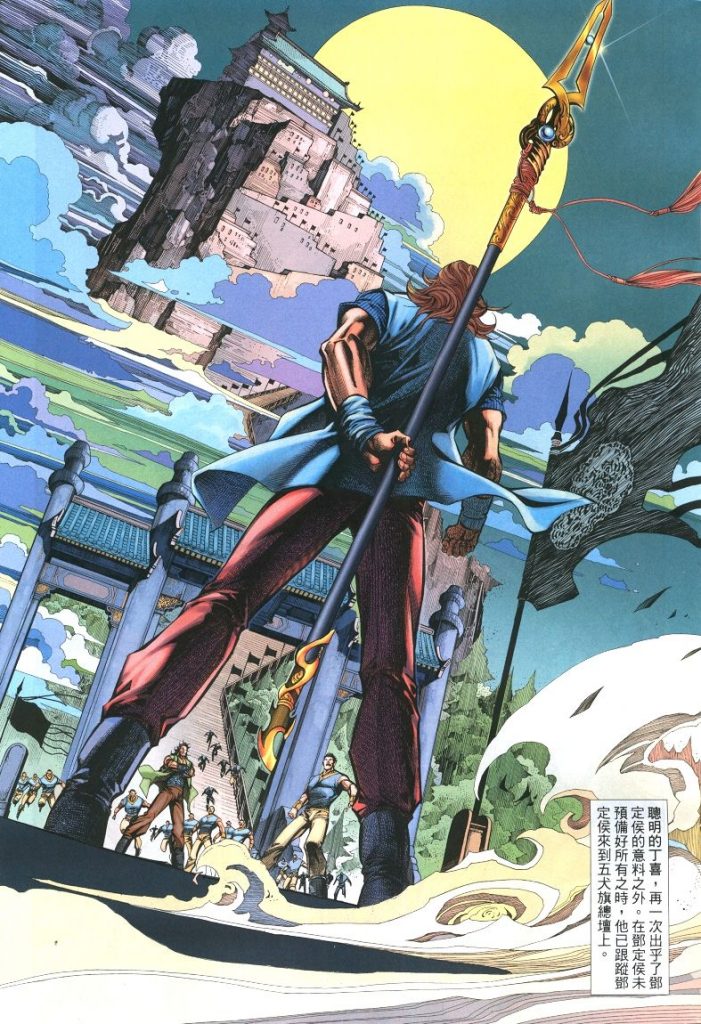
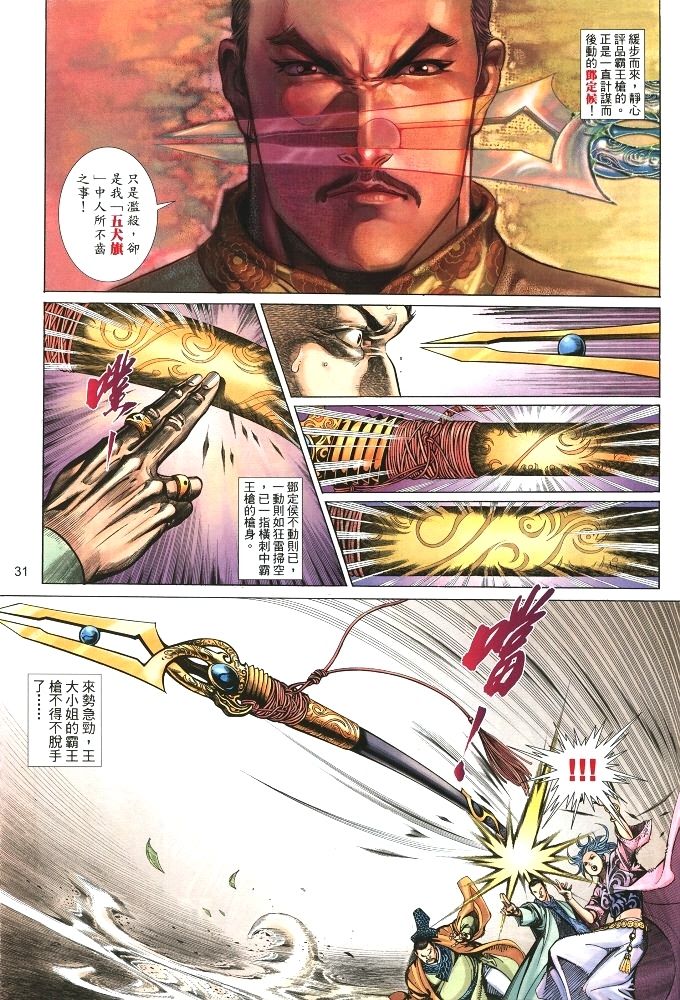


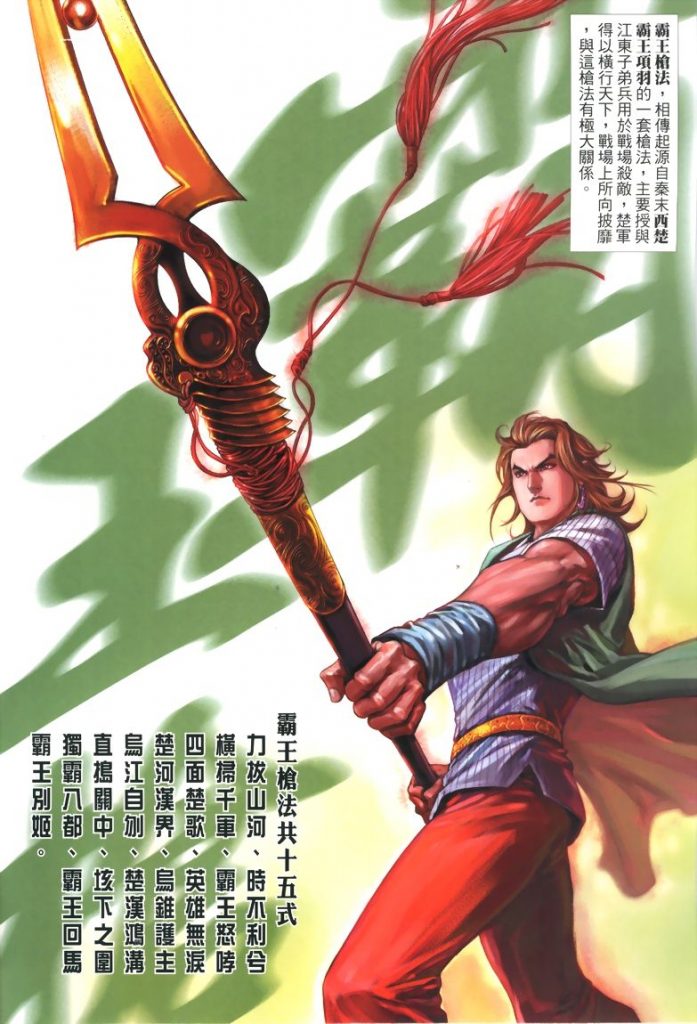
The Design
The initial itch to make something again originated from reading Mo Dao Zu Shi (魔道祖師 The Grandmaster of Demonic Cultivation), which described in length some legendary swords. As my mind wandered through the options, I got a bright idea to make a spear instead. Since the majority of a spear is just a simple stick, it should take relatively little effort. Unfortunately, the only cool spear I could think of was anything but simple. The spear head alone was so complex that it ended up being more work than the entire Remnant Sword project.
To do it right, I took meticulous measurements from both the manhua pages and my miniature replica, and averaged the few data points for a best ratio. Though half way into building everything based on a 6.5-foot blueprint, I improvised and added another 8 inches to the staff so it would tower over me.
In making this Hegemon’s Spear, the challenge was to navigate its convoluted shape and avoid a flimsy product. Transforming all the curves into straight lines that my tools could work with also added to the complexity. Thus, unlike the previous projects where I mentally kept track of the plan and only thought through 2-3 steps ahead of time, I actually had to sketch everything out well in advance. Lots of measurements and calculations were involved. I was grateful of my middle school teacher when finding myself still able to compute arctangent and convert between degrees and radians.
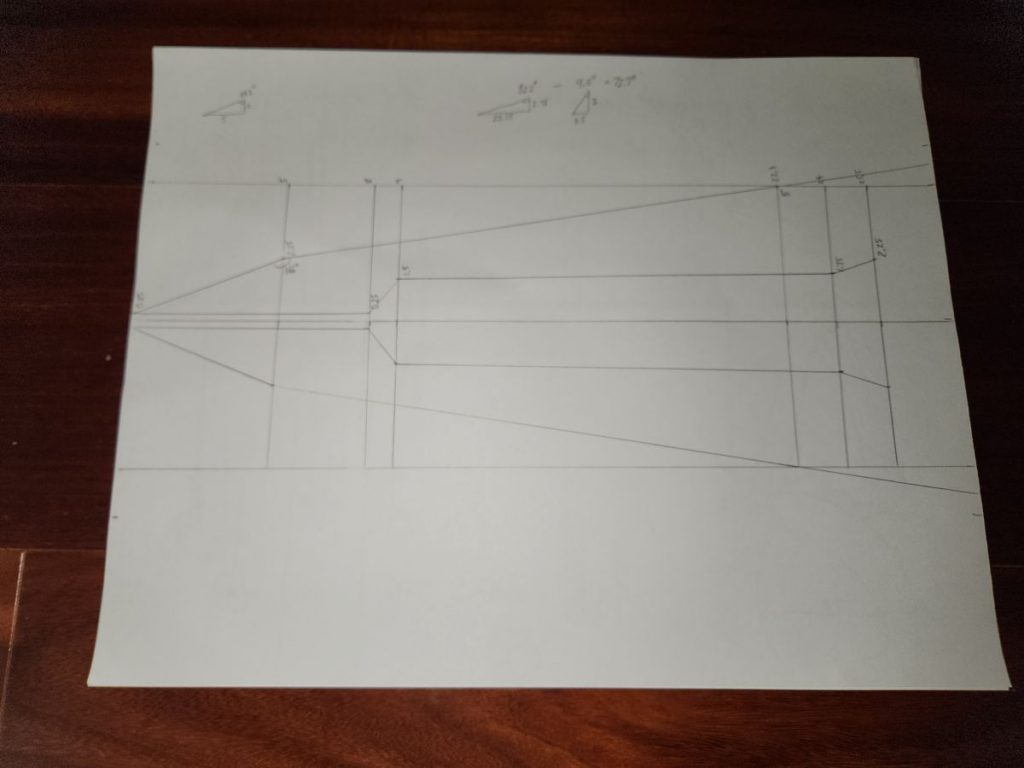
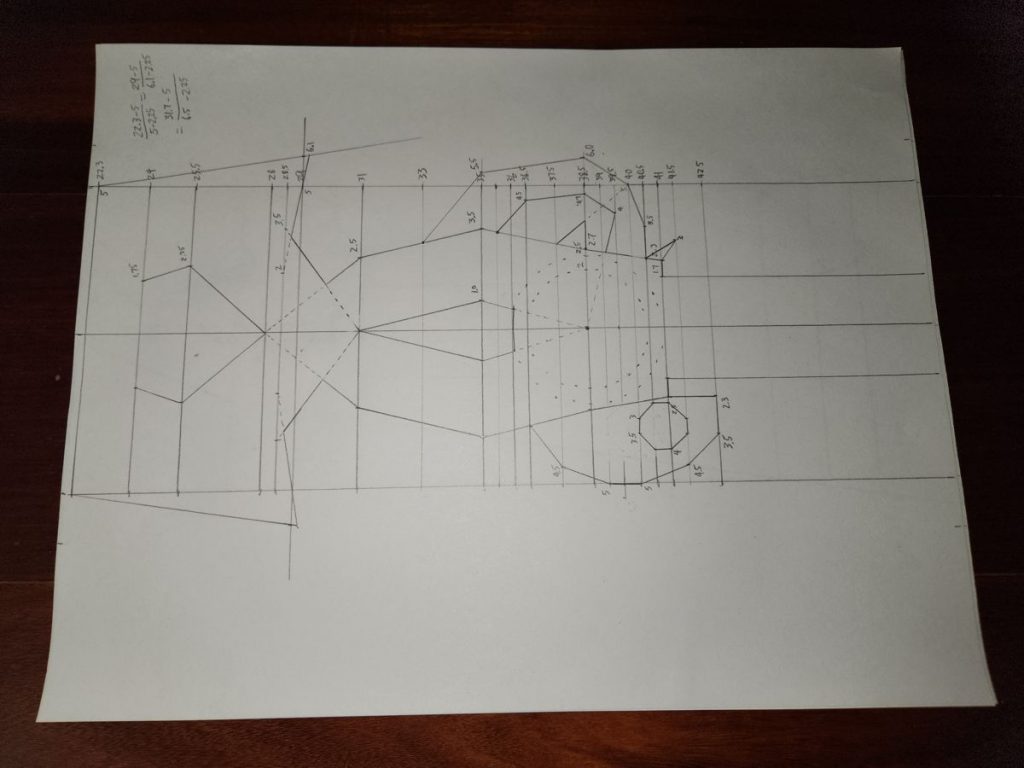
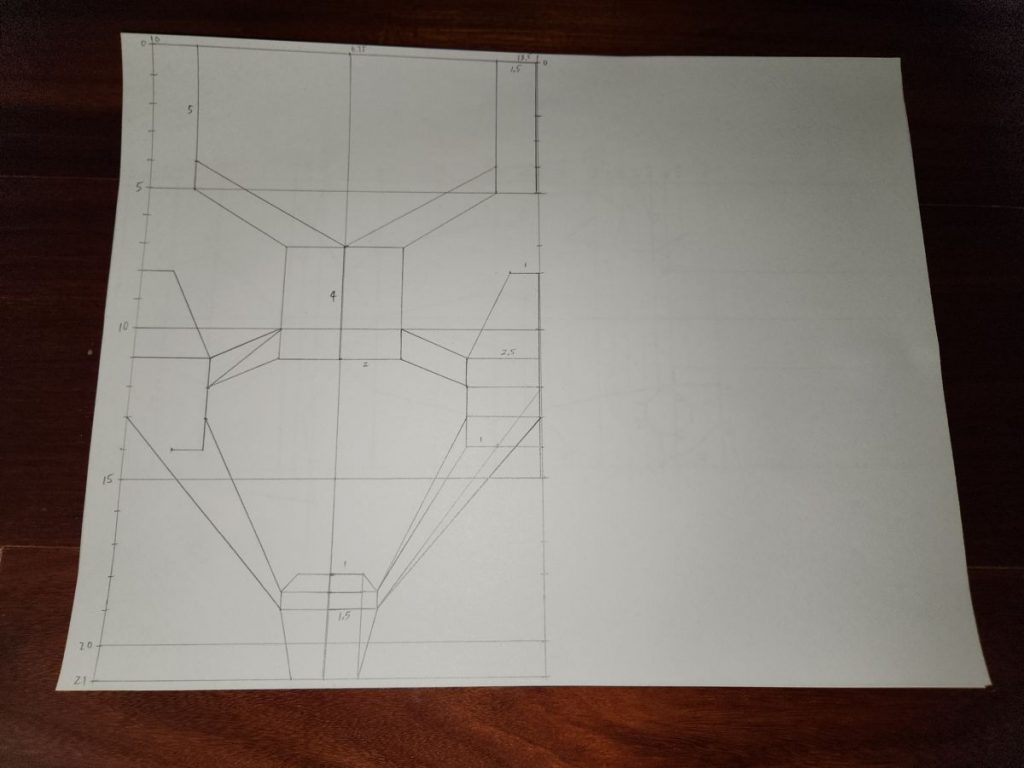
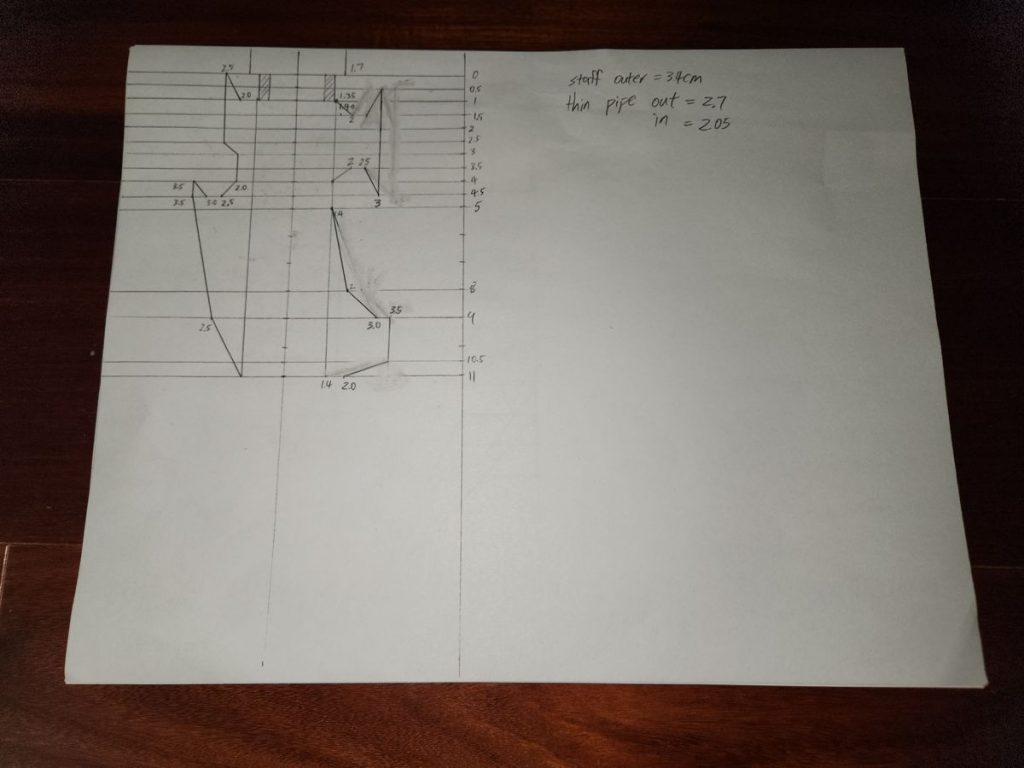
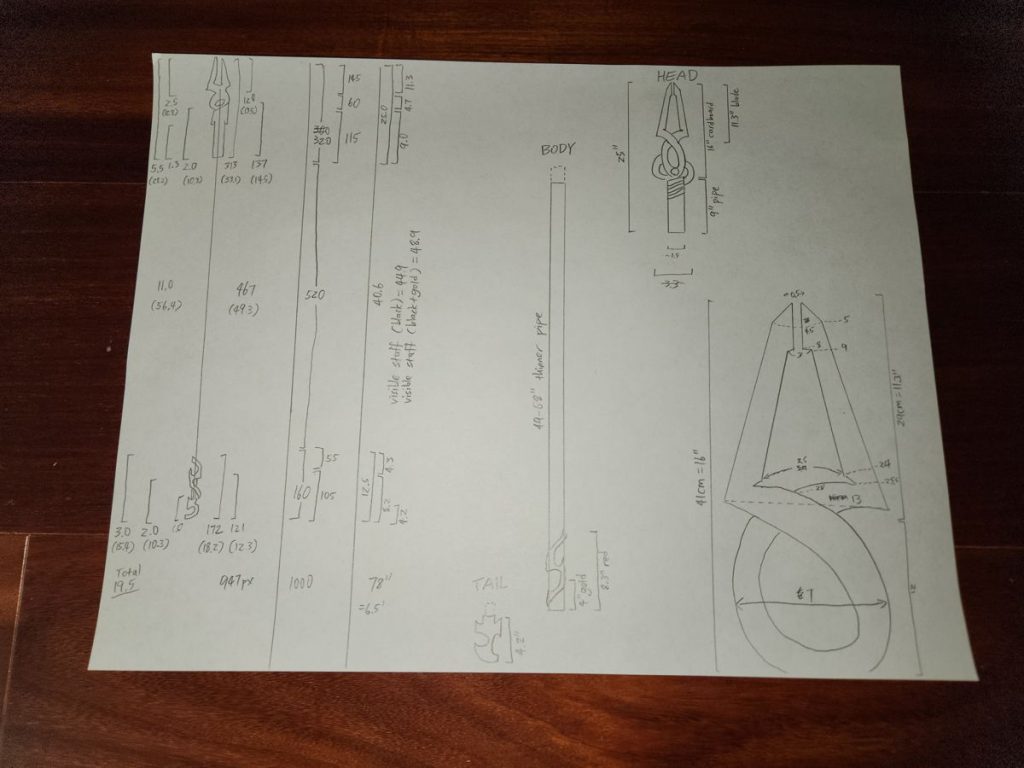
The Materials
Here’s the most romantic thing about this build: the core layer of the spear head used the leftover piece of cardboard that made Can Jian‘s blade (with original pencil markings still on it), and the neck was cut from the same pipe as my light saber‘s hilt. It’s a common wuxia trope for two famous weapons to be forged from the same piece of legendary metal – the most famous example might be Heavenly Sword and Dragon Slaying Sabre (倚天劍 & 屠龍刀) – and have magical sibling or rival properties.
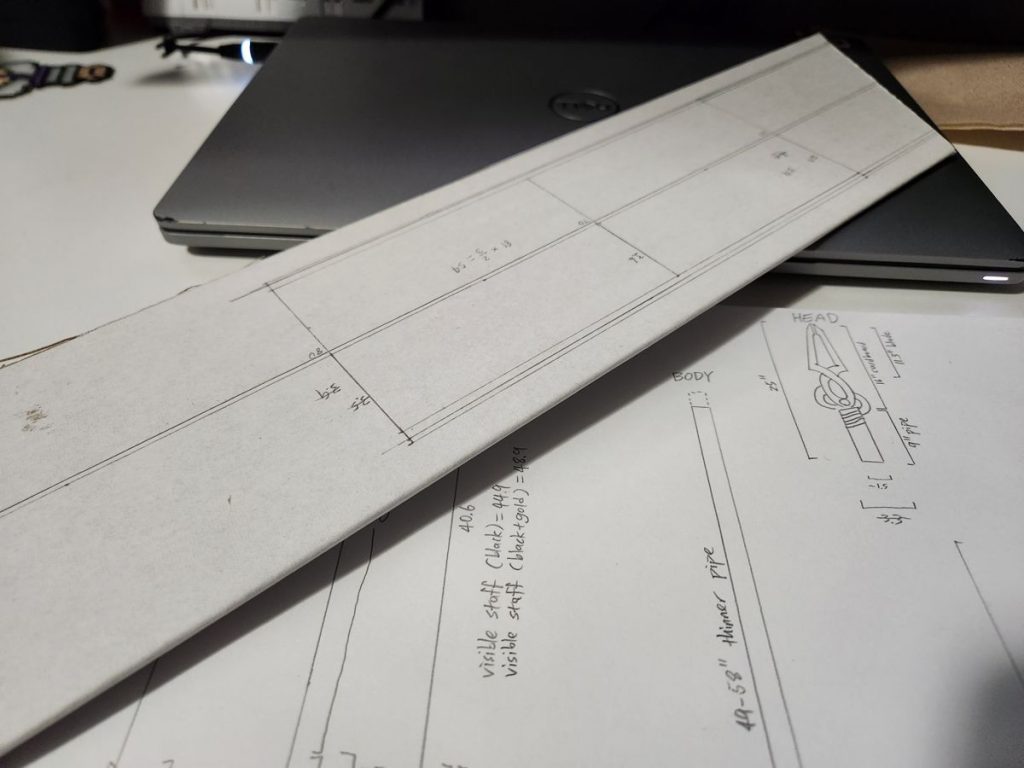
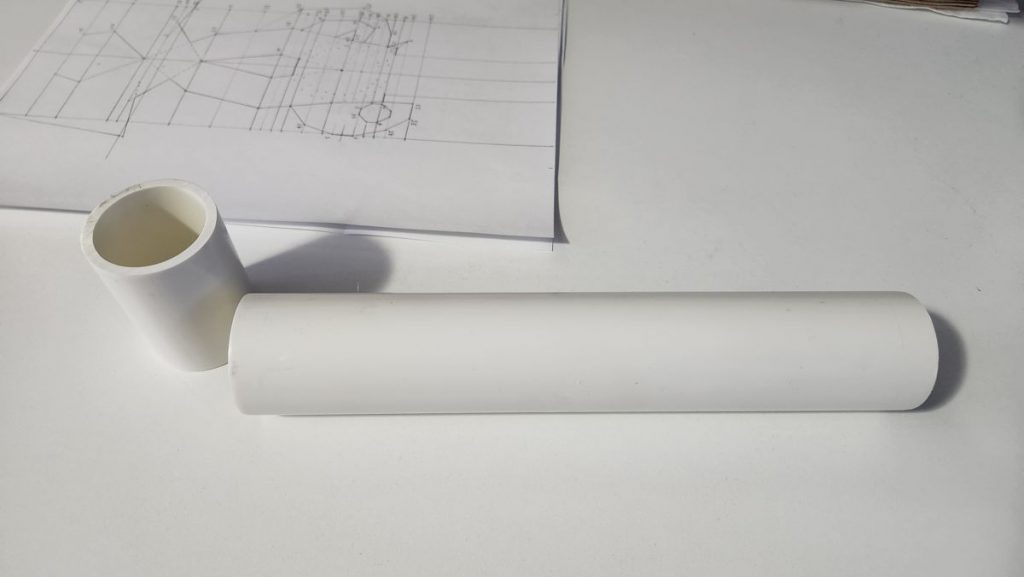
With each project, my appreciation for corrugated cardboard grew. It’s both sturdy and moldable, suitable for crafting 3D contours. I was able to expand on the techniques developed for the previous projects and greatly expand on them. I also found the surface sheets (flat part of the corrugated cardboard) to be an excellent wrapping material for a smooth finishing.
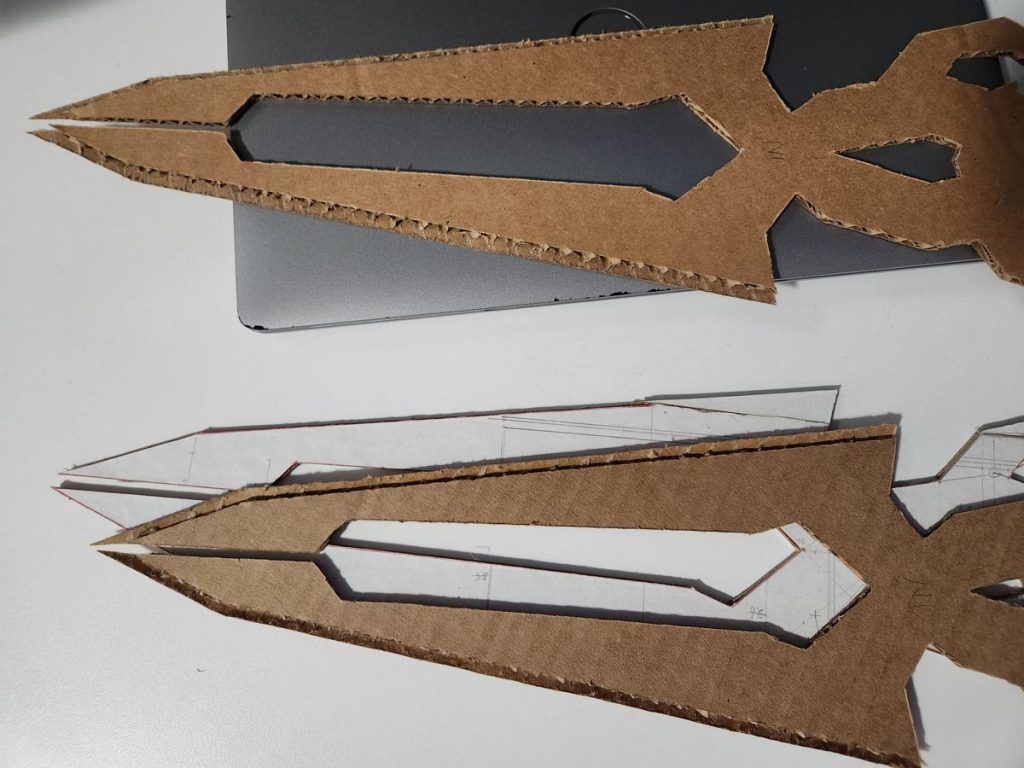
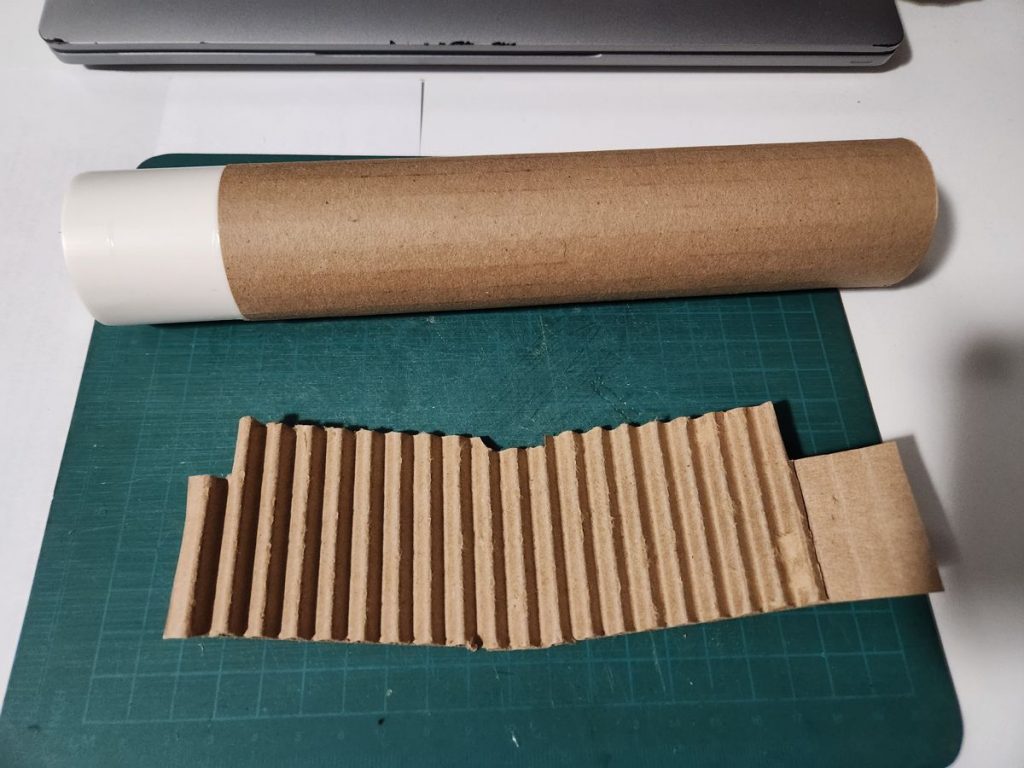
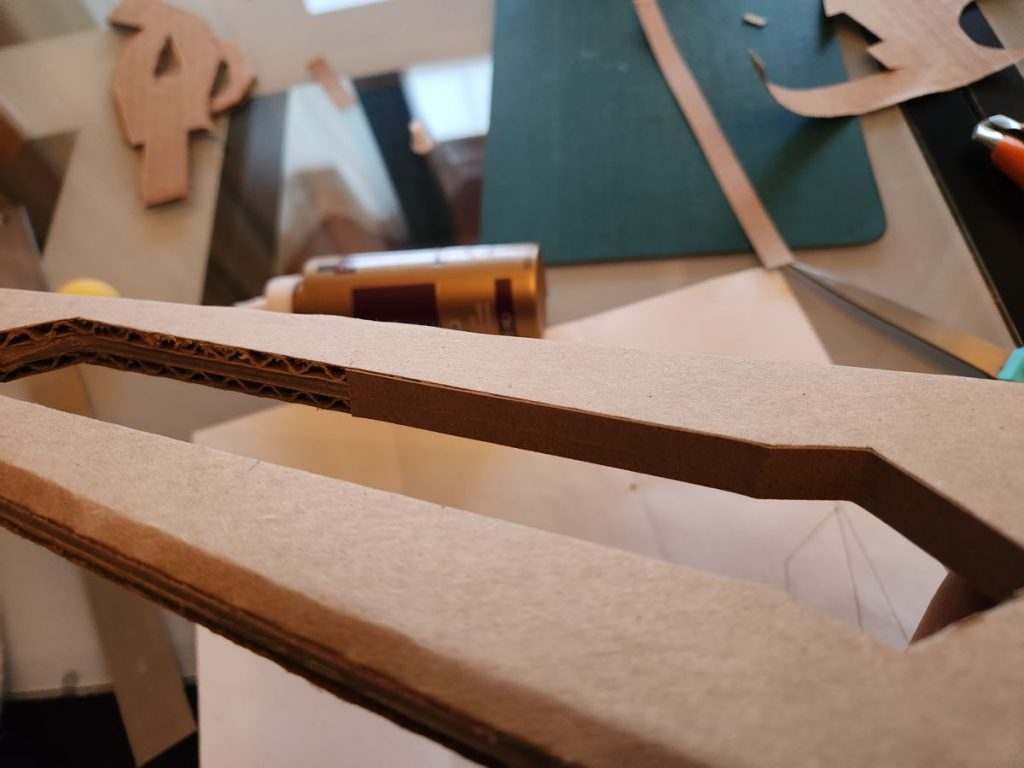
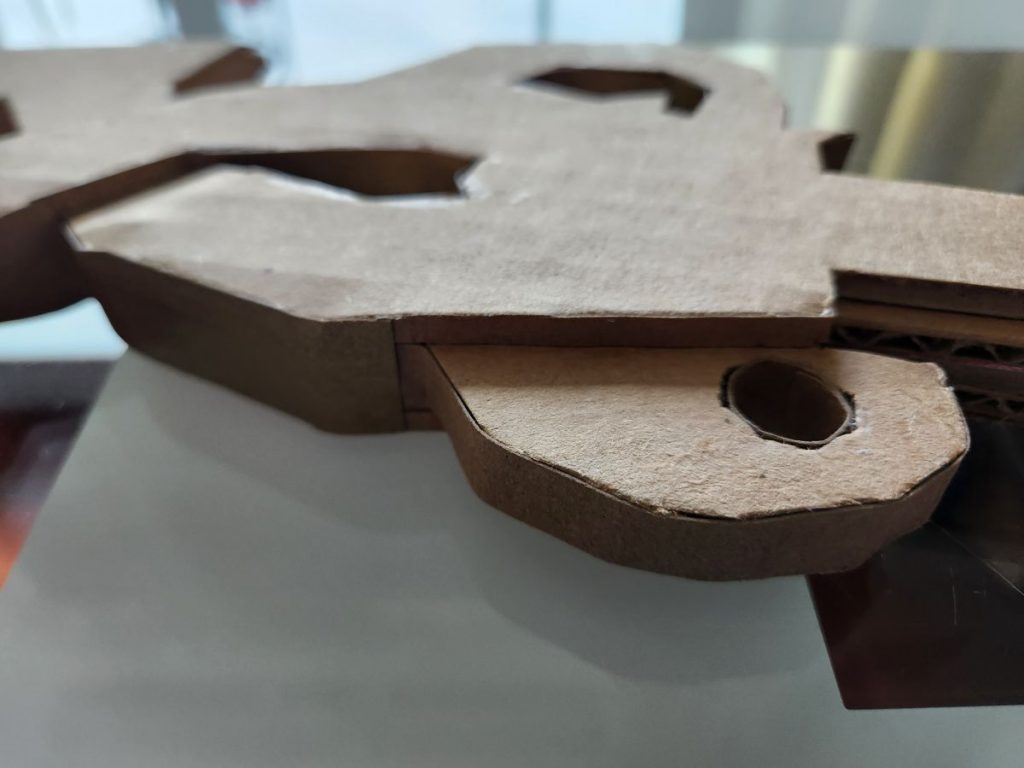
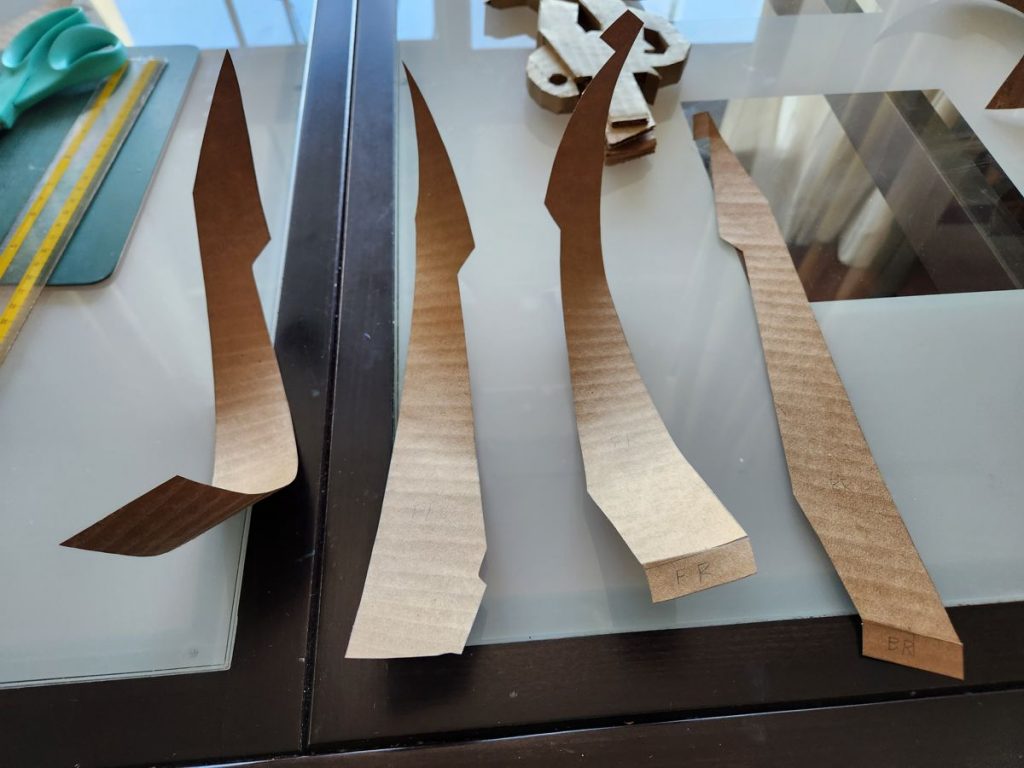
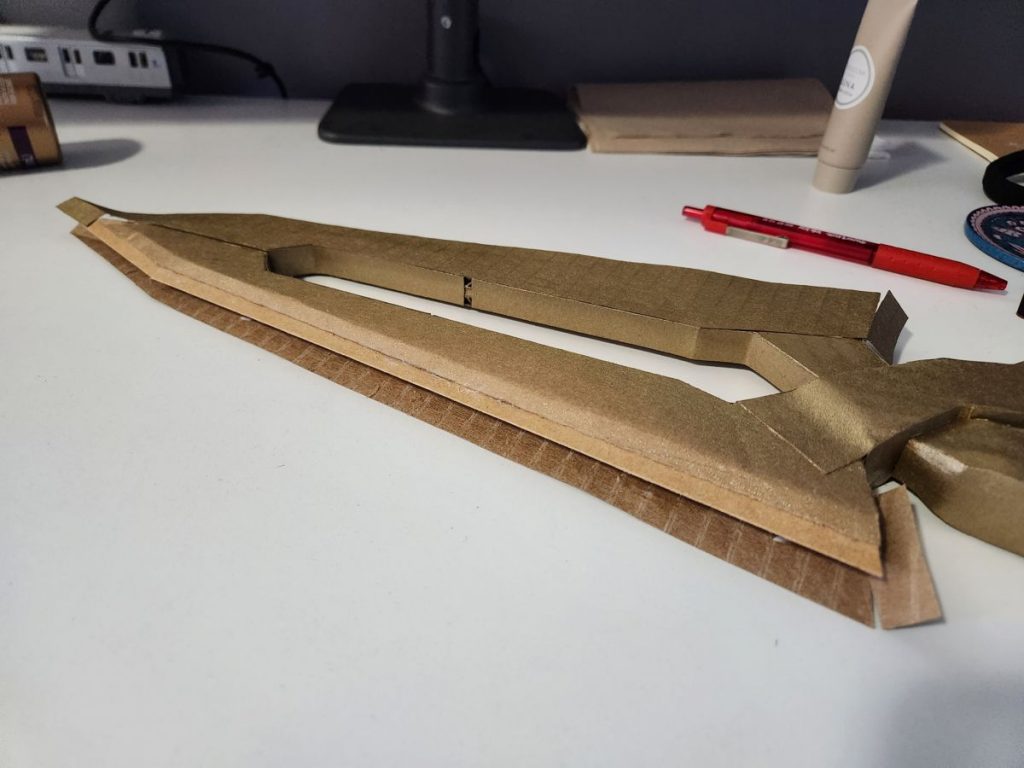
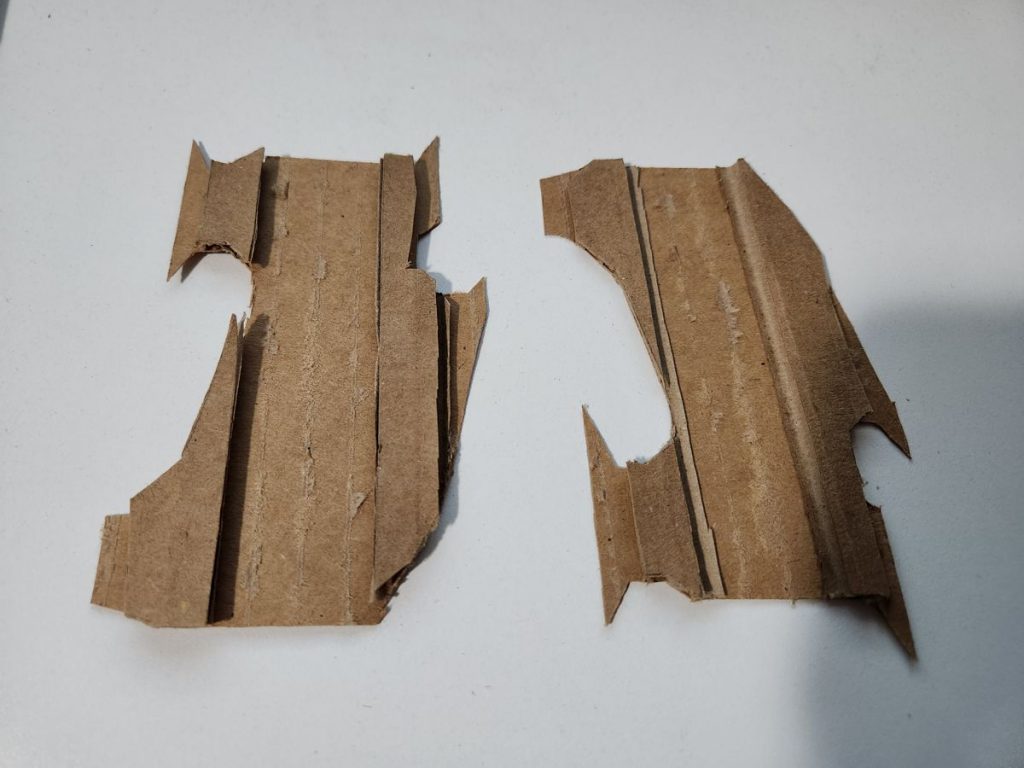
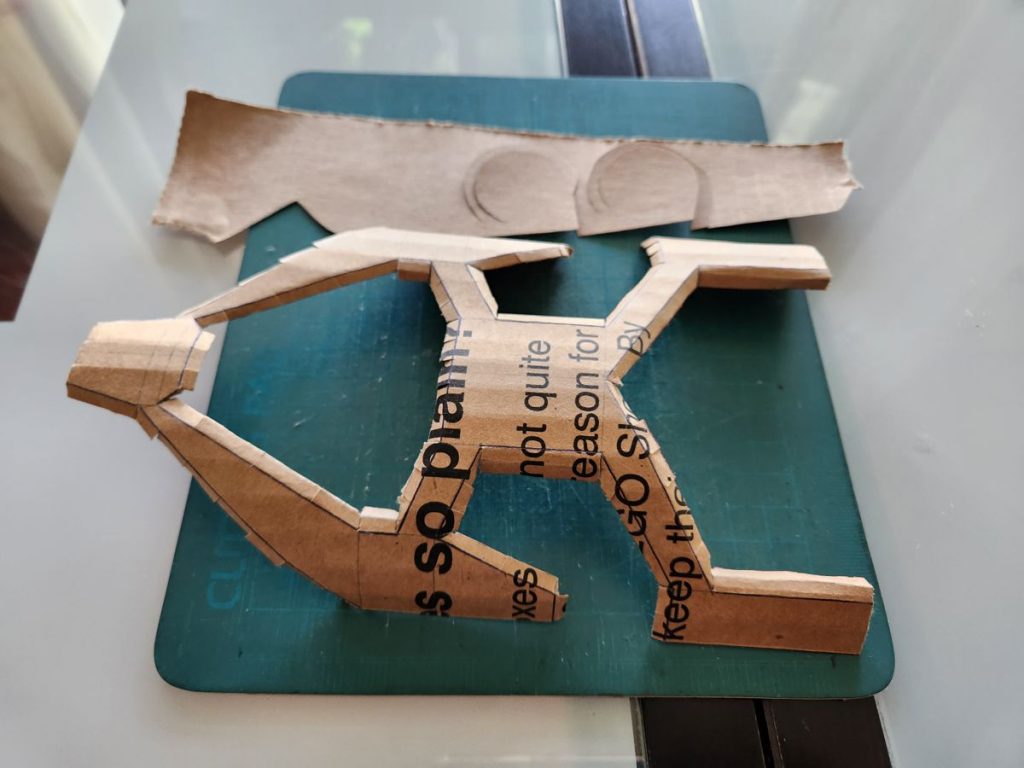
Even though the construction relied heavily on Amazon boxes and leftover things from the storage, I still dropped almost $70 on stuff:
- $16.06 for a PVC pipe and a roll of duct tape
- $35.61 for a can of spray paint, eight rhinestones (of which I needed just two), and 144 mini ping pong balls (of which I needed just one)
- $17.48 for a box of embroidery floss and a roll of red cord
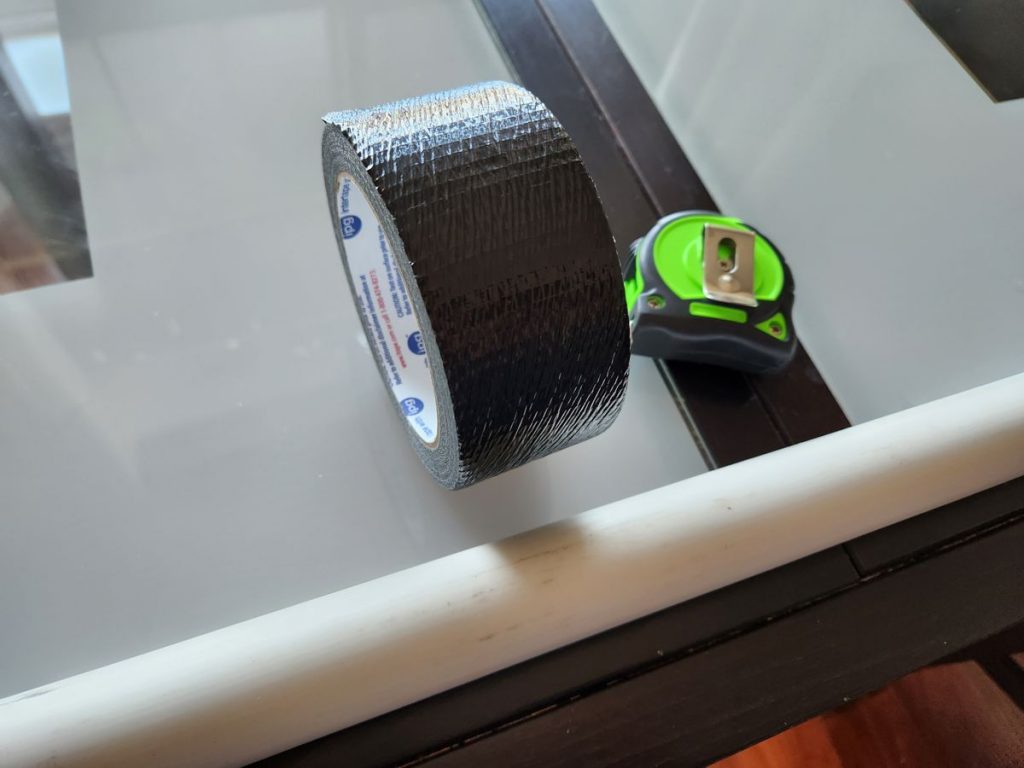
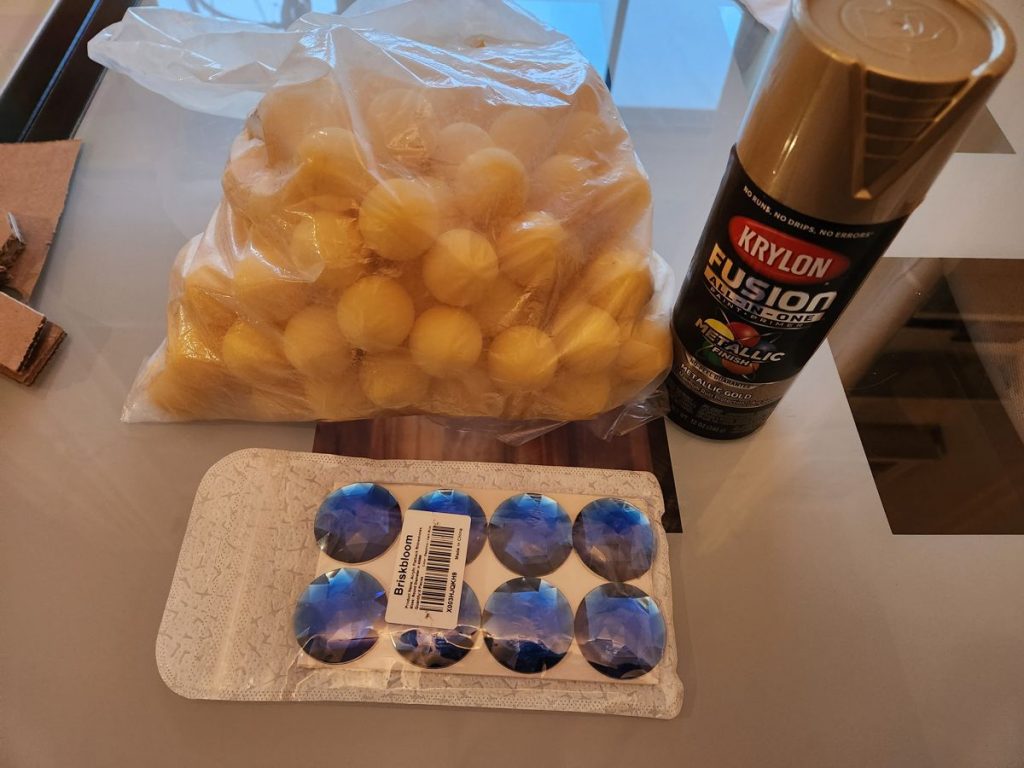
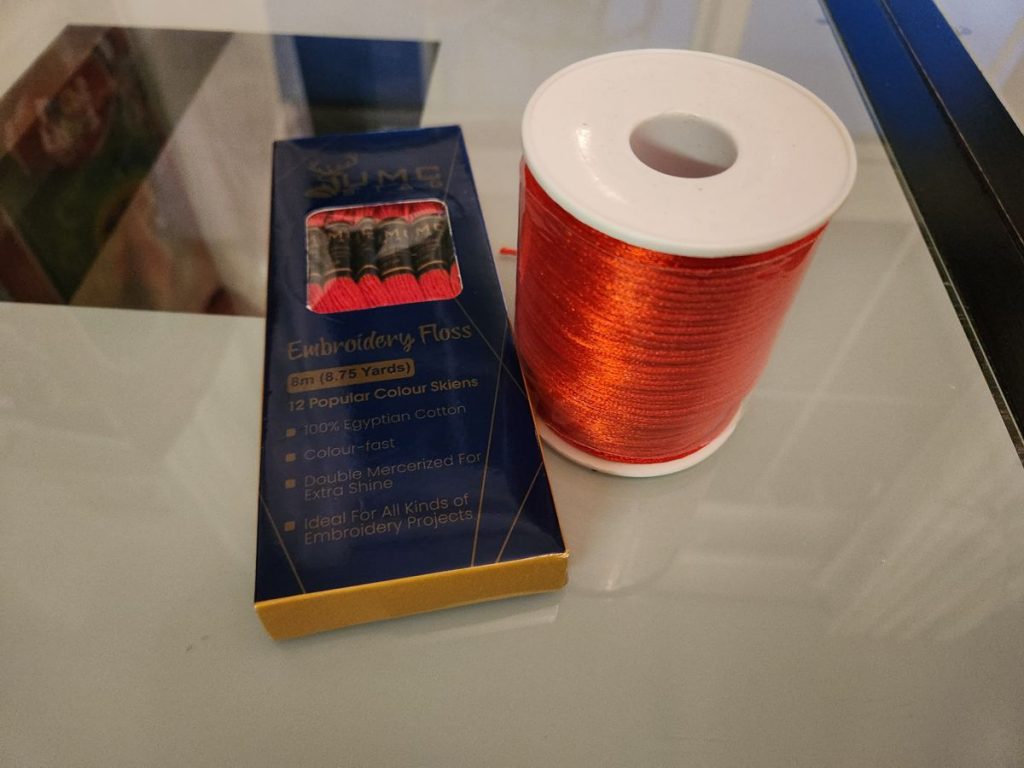
The Modularization
Unlike the light saber which has to have a detachable blade, a spear doesn’t necessitate removable components. That said, because carrying a 7-foot stick around would be rather tedious, I fancied the idea of being able to take off the spear head to show it off. Therefore, as I made the connections for the various parts, I looked for a way to get the pieces on and off without using glue. The end product were these skinny PVC pipes wrapped in layers of corrugated cardboard sheets that fit snugly into wider PVC pipes. It worked surprisingly well. Not as funny as the plastic bottle cap, but more elegant.
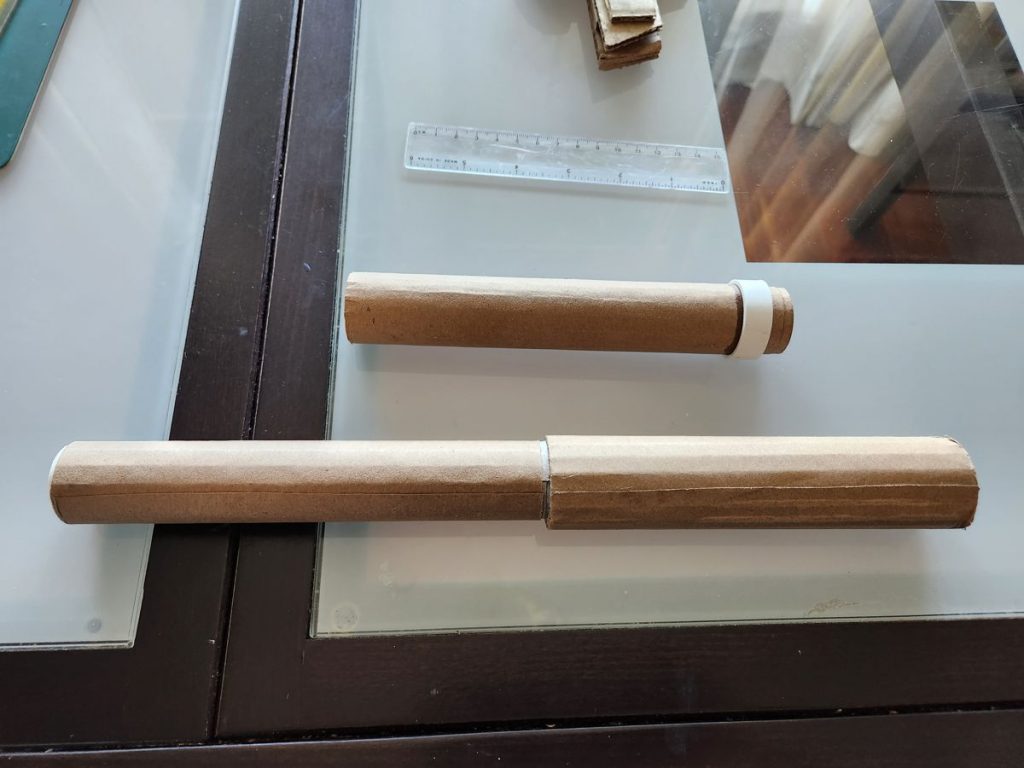
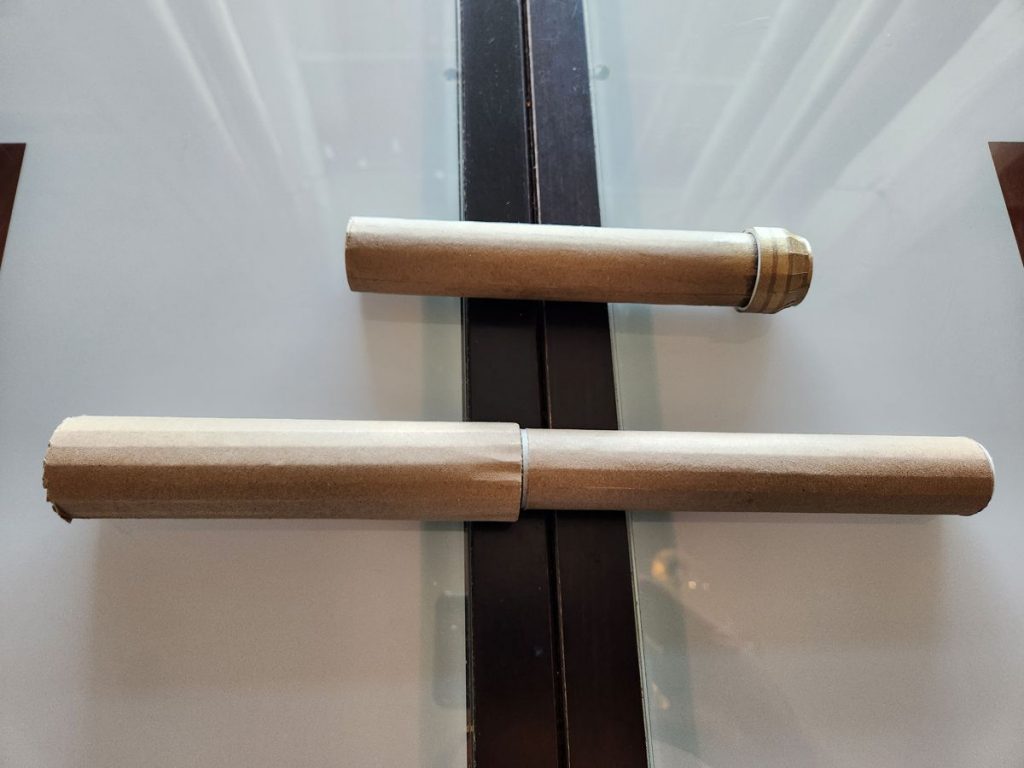
Spear Tail
In the manhua, the tail of the spear is a curved blade-hook, an integral part of the weapon frequently used in combat. Whenever the owner put the spear down, the tail poked a big hole in the ground and allowed the giant stick to stand upright. My initial plan was to mimic the original art and detach the tail when I set the spear down… but the improved plan transformed the blade-hook into a wider, thicker, and more linear shape such that it could be the spear’s foot instead. I used 5 layers of the dense cardboard to support the weight before adding corrugated cardboard and paint.
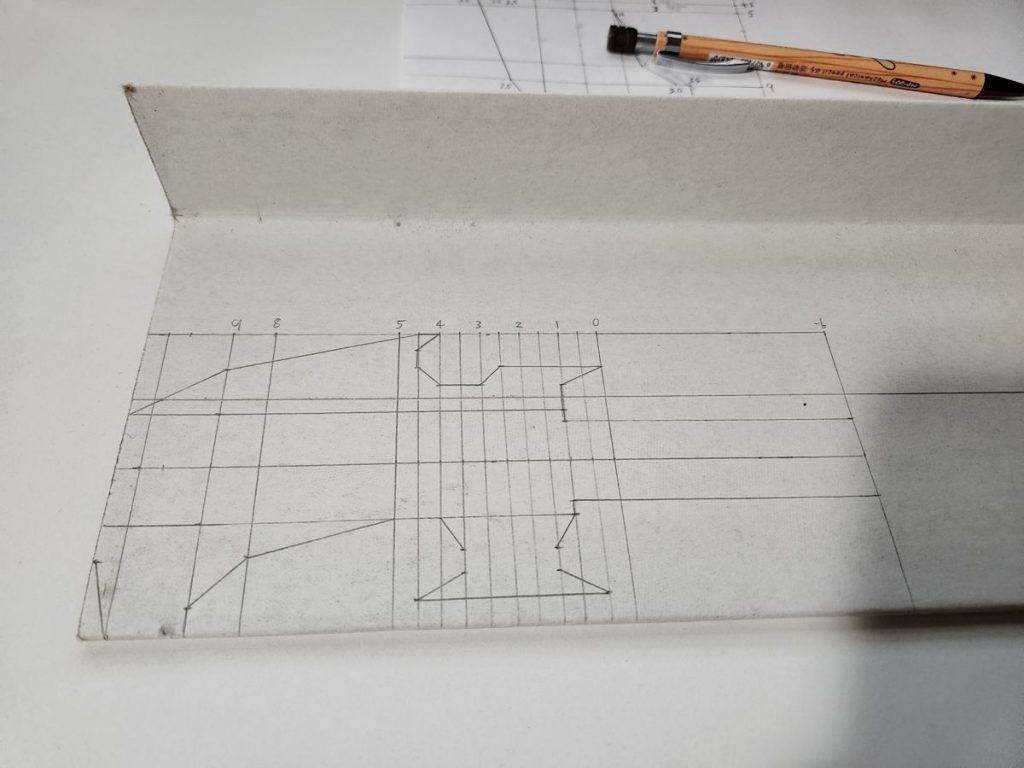

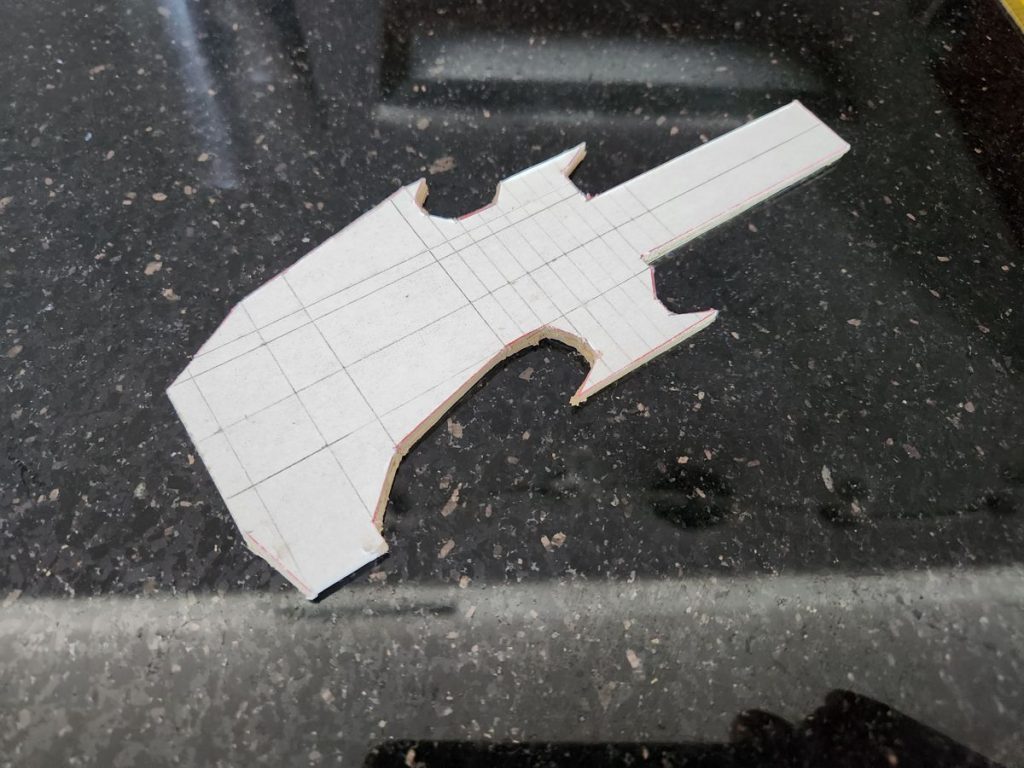
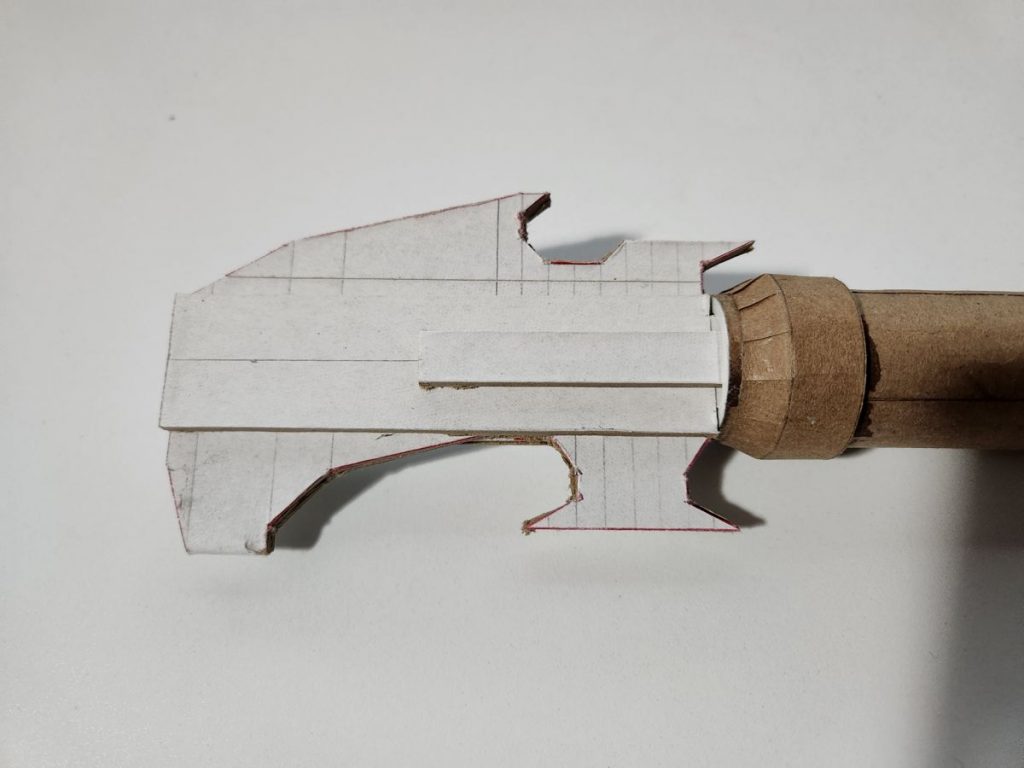
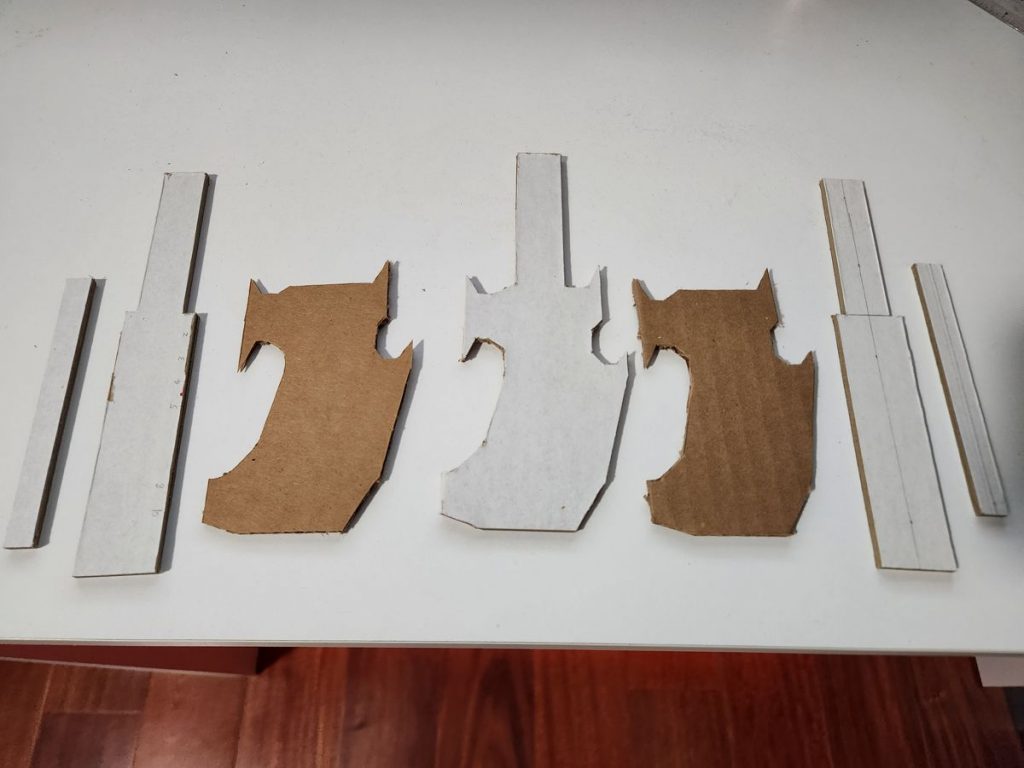
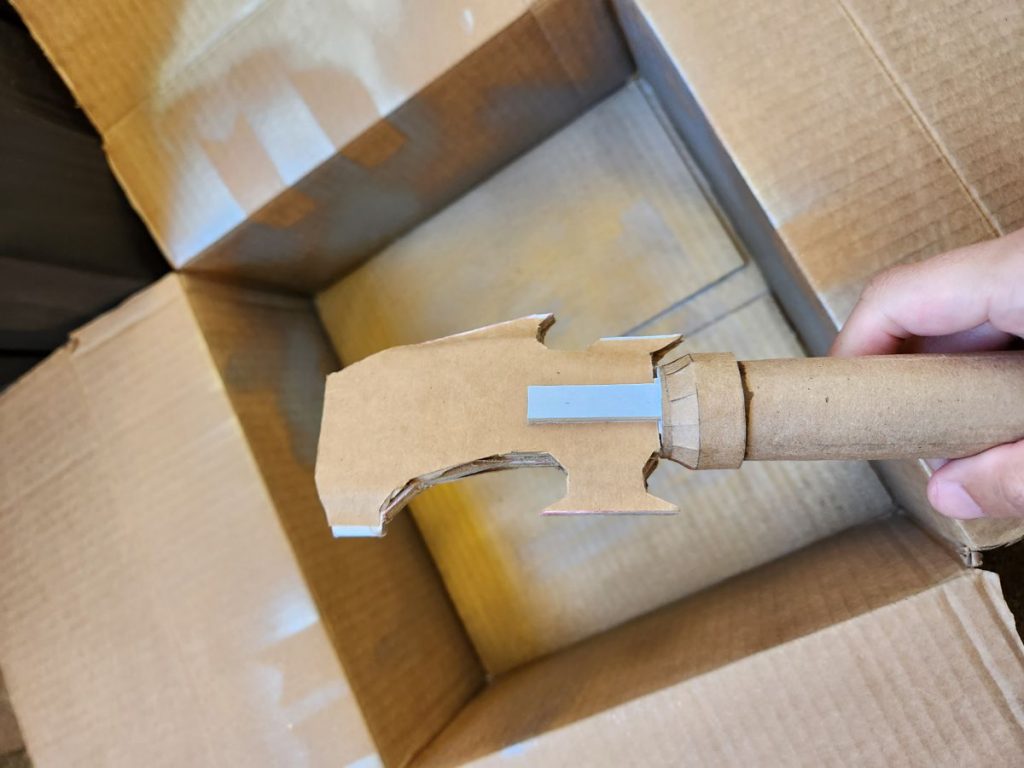
Form yielded to function in the design of this spear tail:

Spear Body
Here I needed a long black stick, but painting a PVC pipe would’ve been a pain in the ass. Thus I bought a roll of duct tape to experiment with, and the result was better than I could’ve wished for. I was able to apply 3 strips of it length-wise rather than spiral-rolling like a candy cane. The finished product was smooth and shiny with a texture akin to golf balls. It looked nice and felt great in the hand. I was very happy with it.
The plain stick was given life by a sculptural trim at the bottom that connected to the tail. Molding this 3D gold wrap was not an easy task and there was a lot of deja vu of my 10-year-old self making my first paper craft.
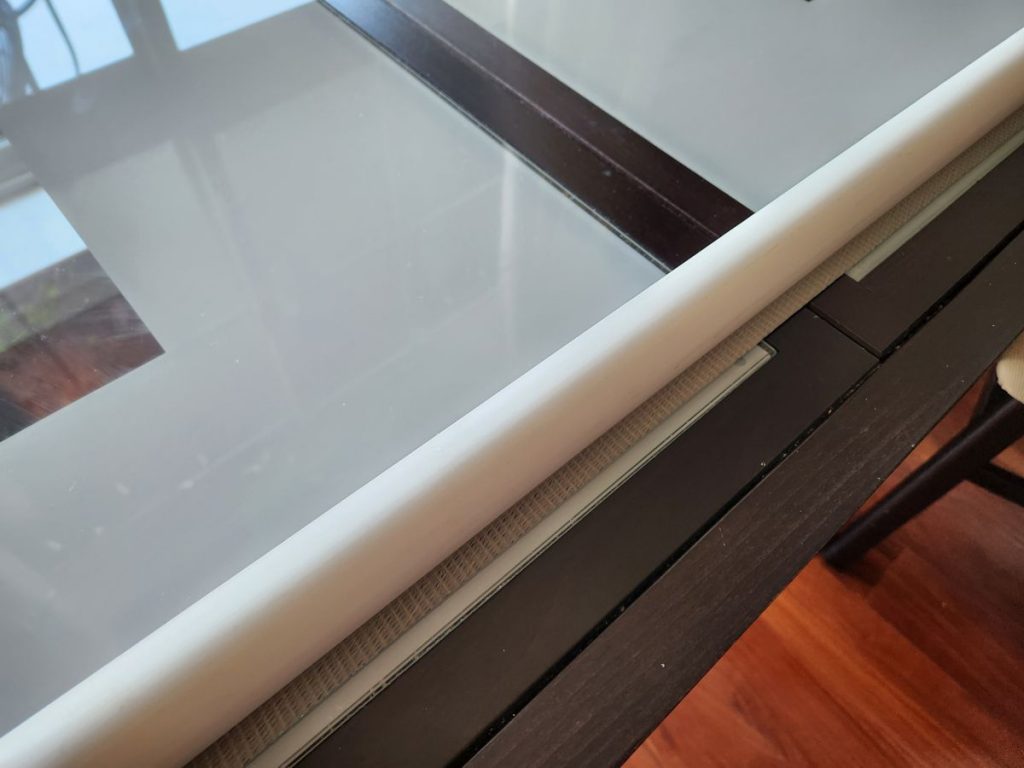
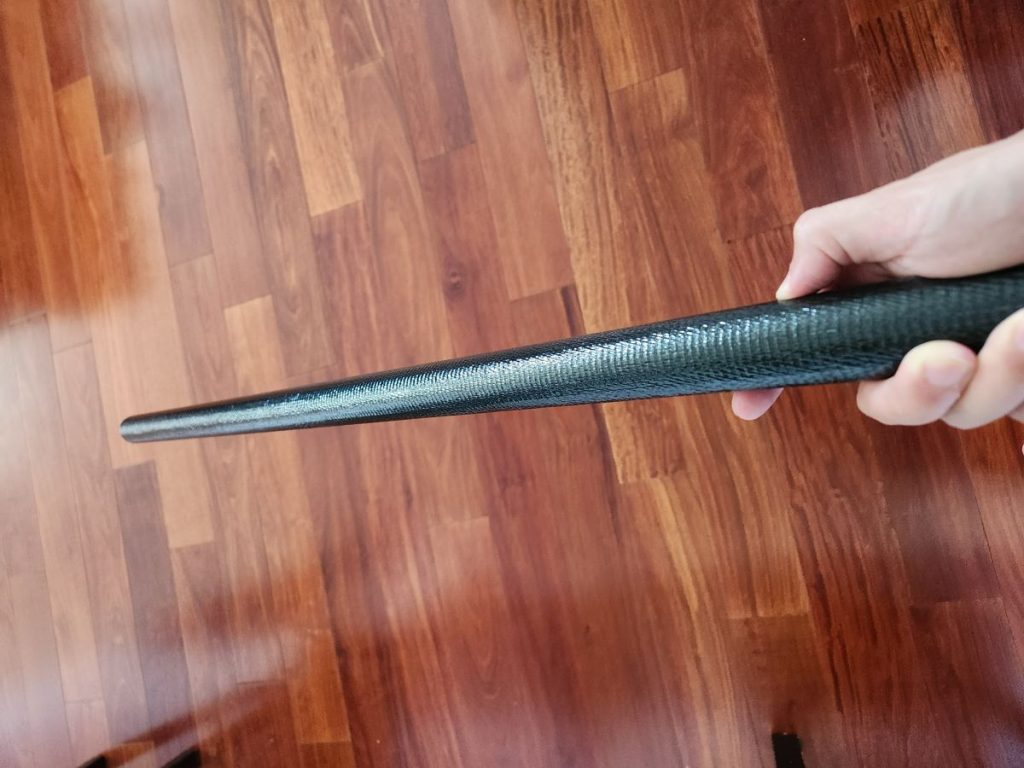
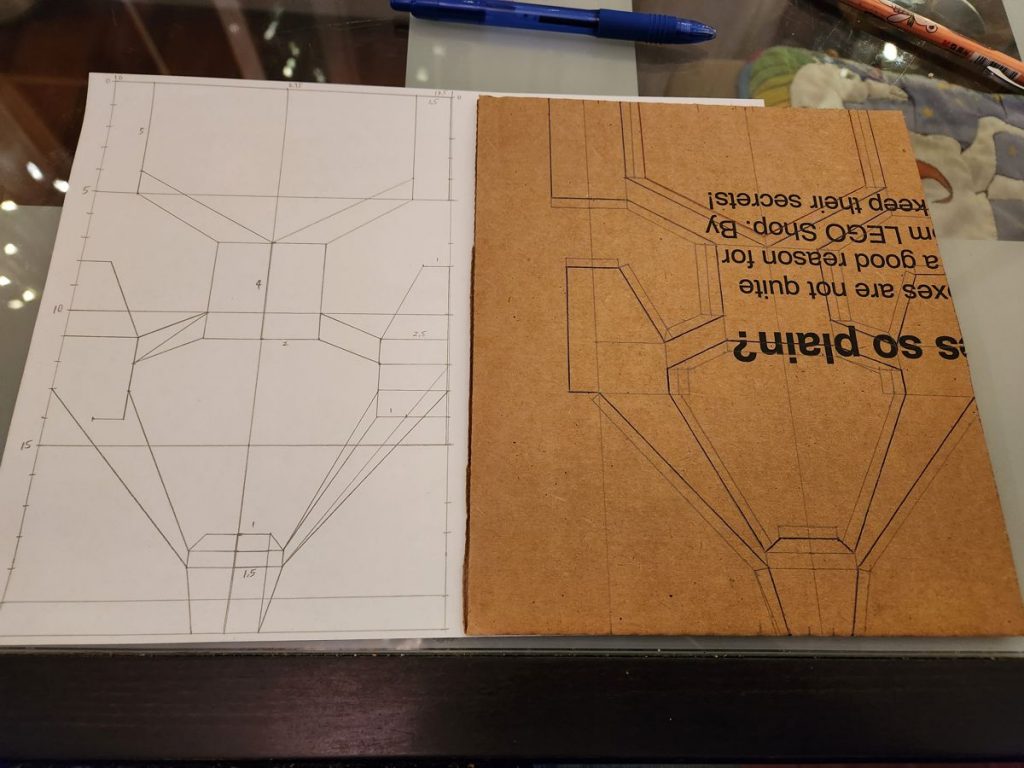
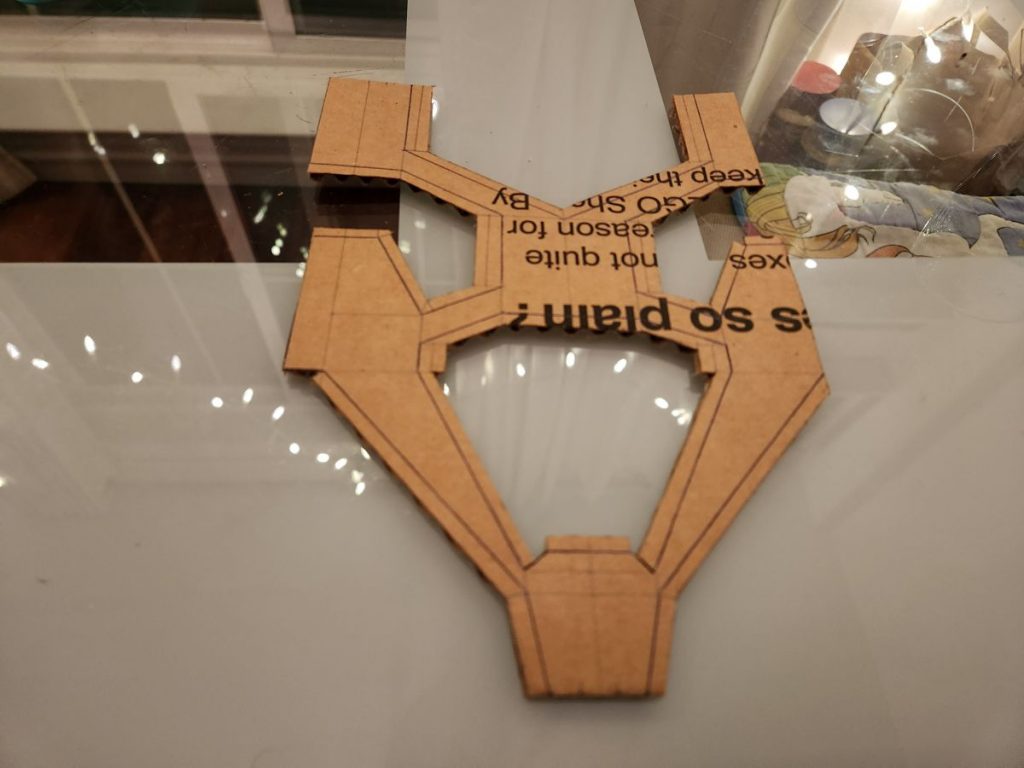
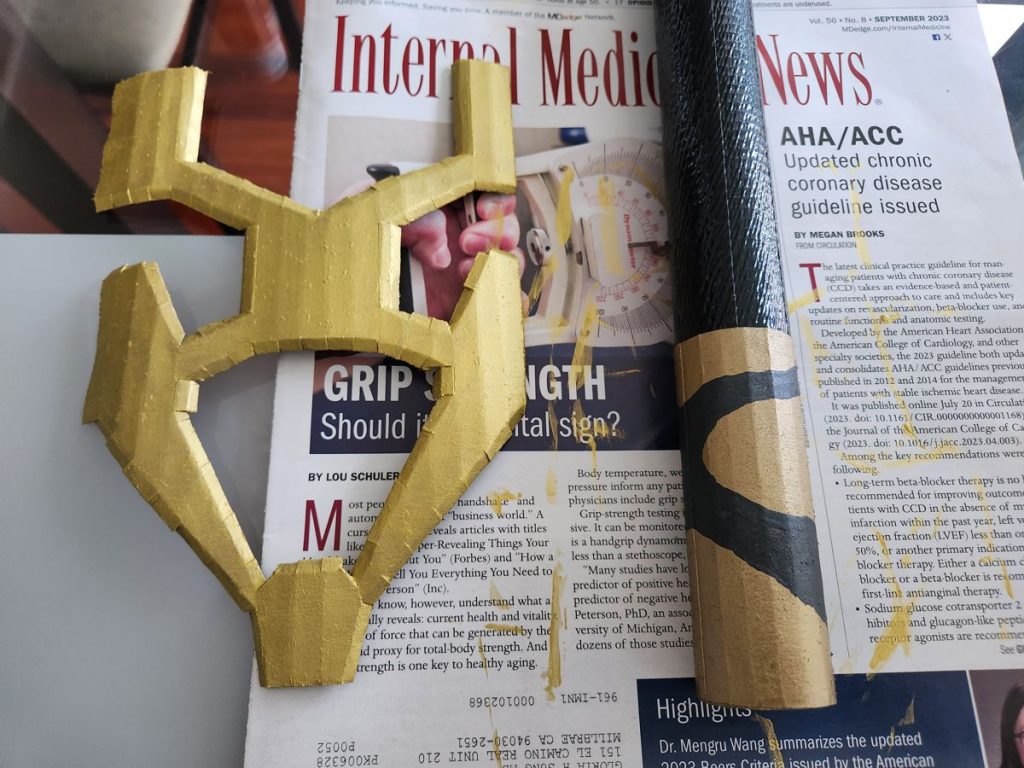
Ta-da:

Spear Head
This funky shape is what makes Hegemon’s Spear Hegemon’s Spear. I had serious doubts about being able to cut this complex shape out of the dense cardboard, because I dreaded cutting even a straight line in this wood-like material. Then I found it helpful to drill a hole at each vertex before cutting. It still required a ton of patience, though.
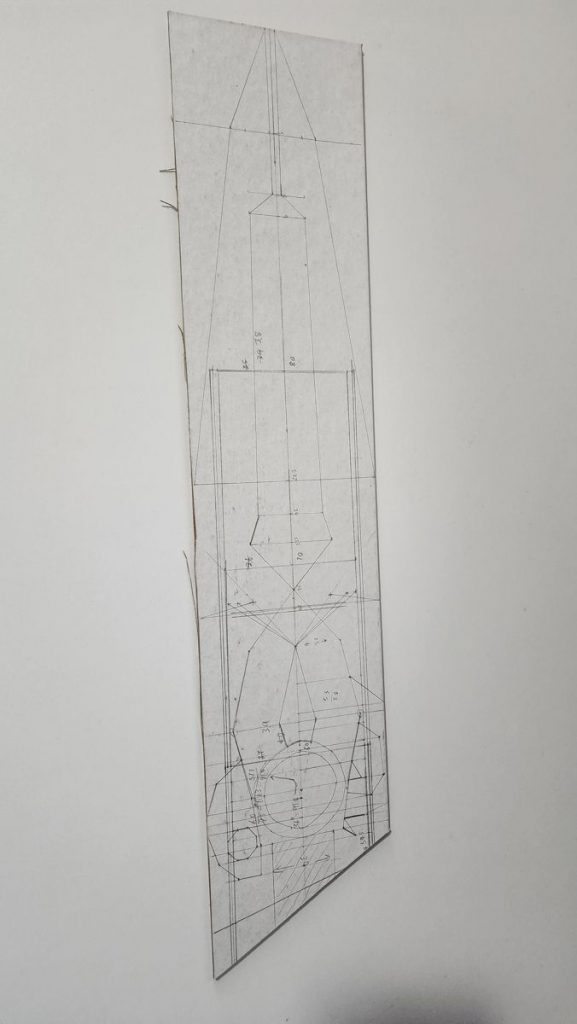
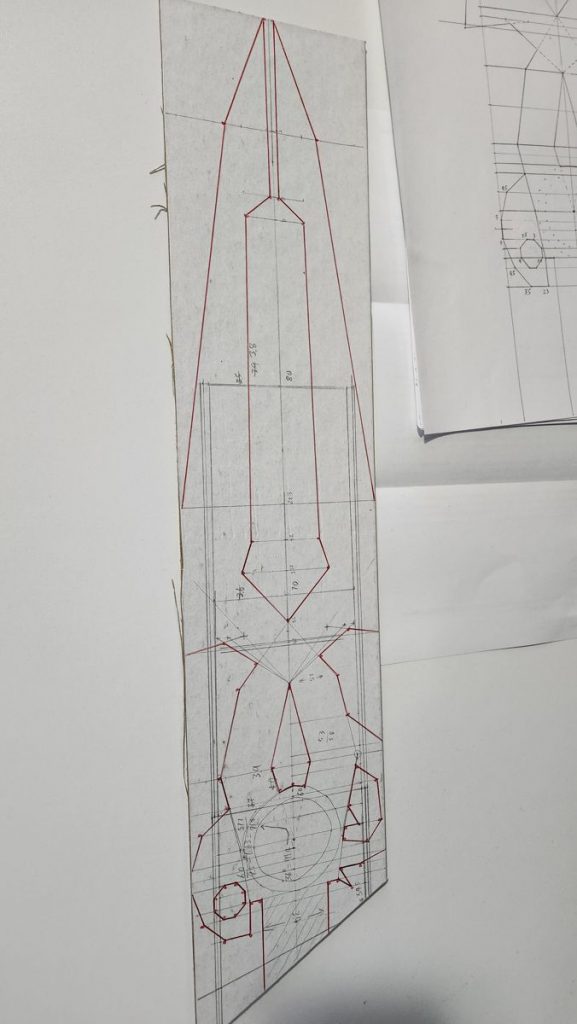
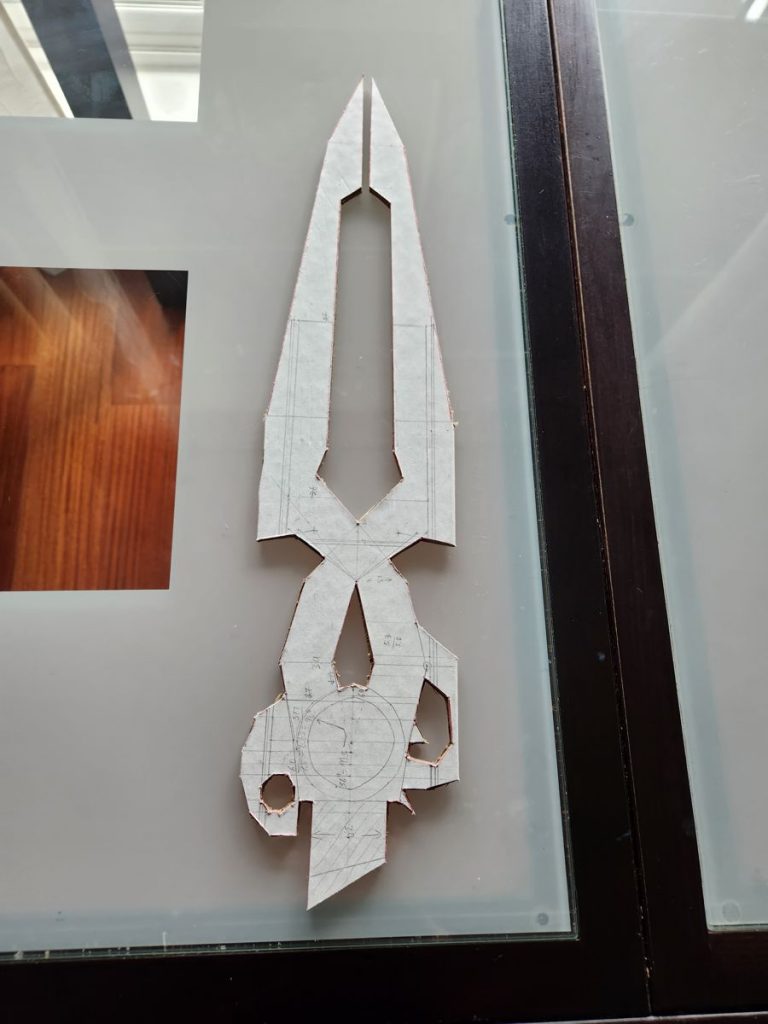
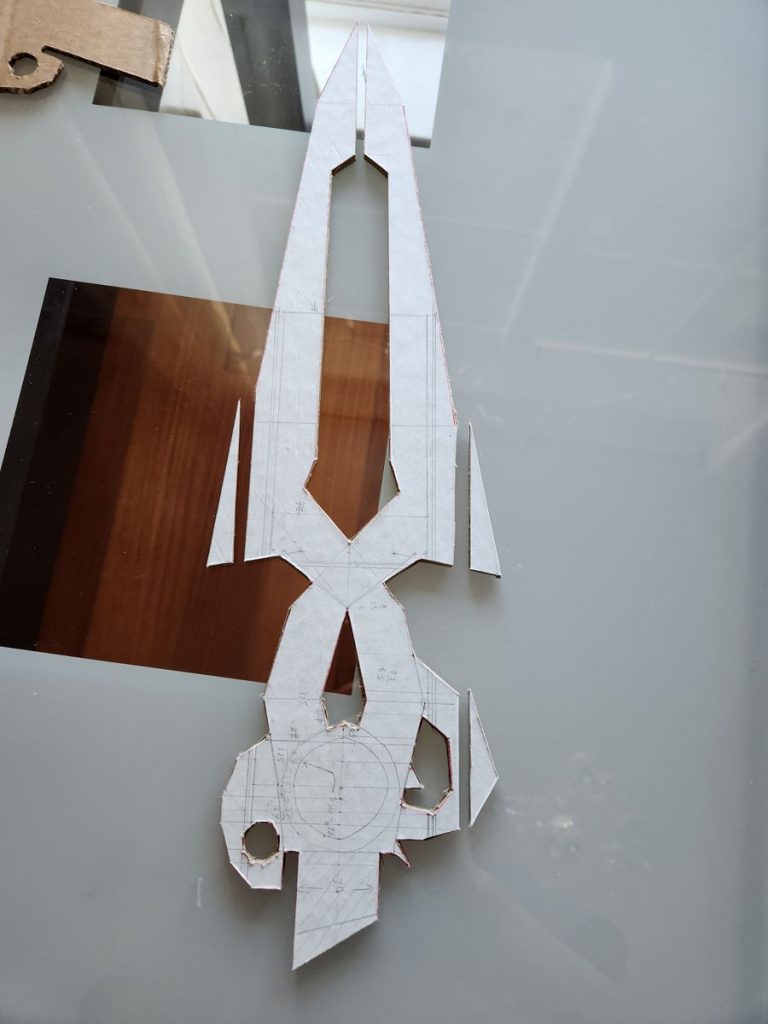
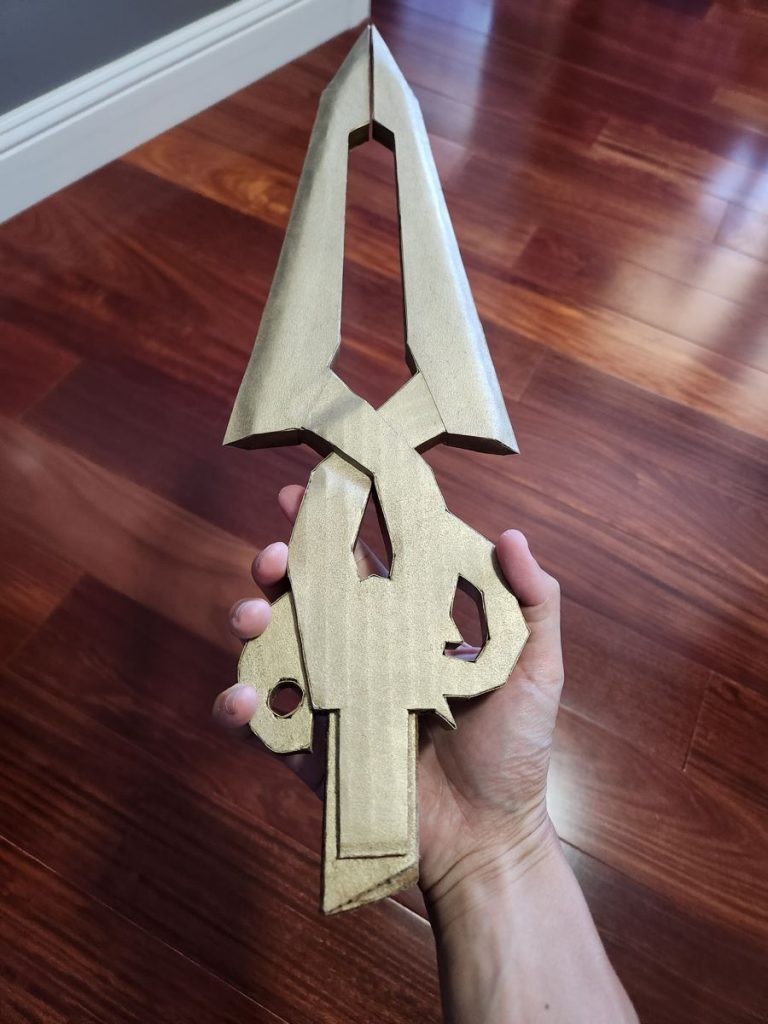
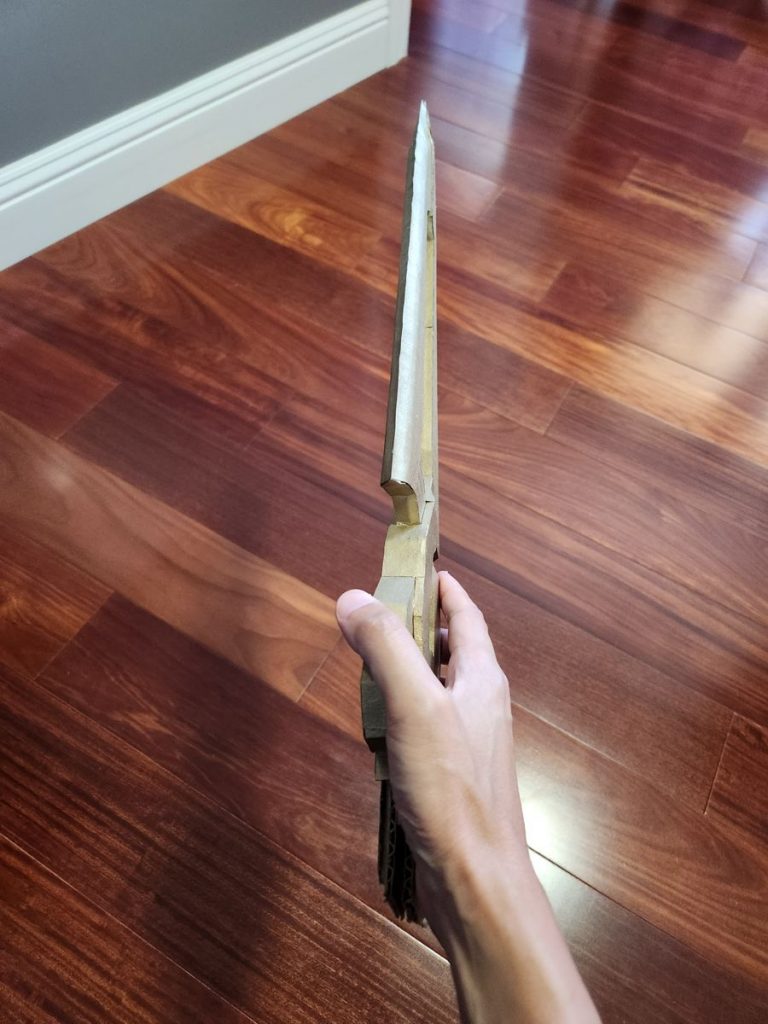
Next up was cutting out more templates to layer for strength and 3D contouring. Adding the blade edge alone took a few hours. Then there was the iconic ball. The precise measurements of this spear head were backward designed to take into account the size of mini ping pong. The planning paid off when the ball snugly fit in place without even needing glue.
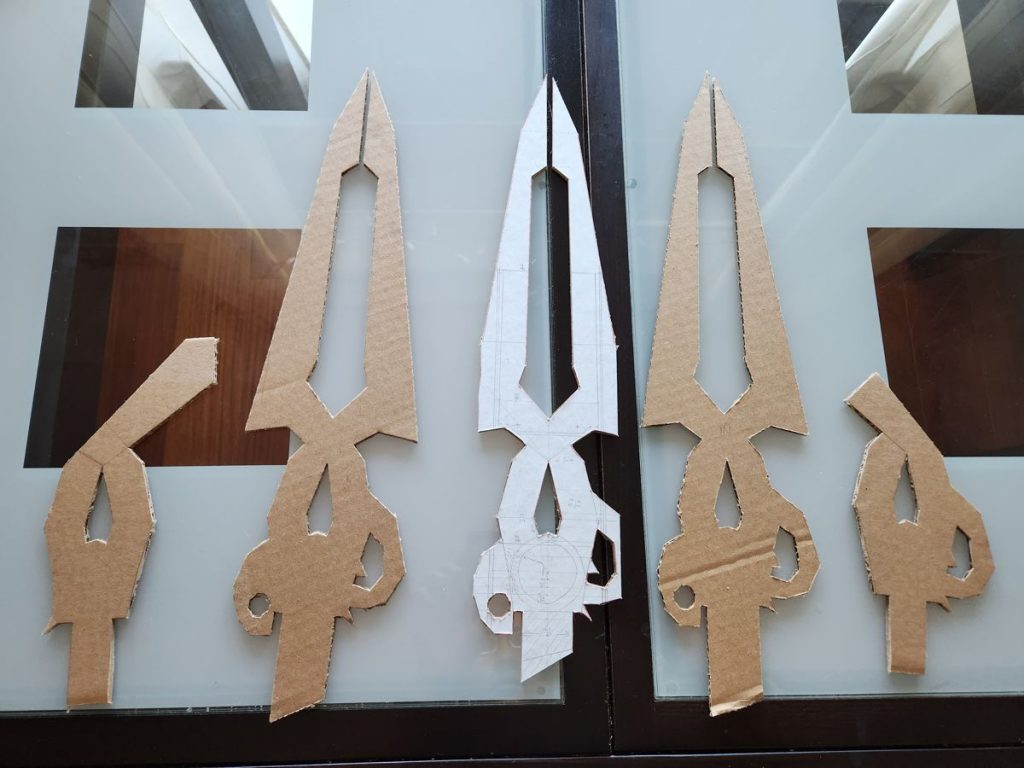

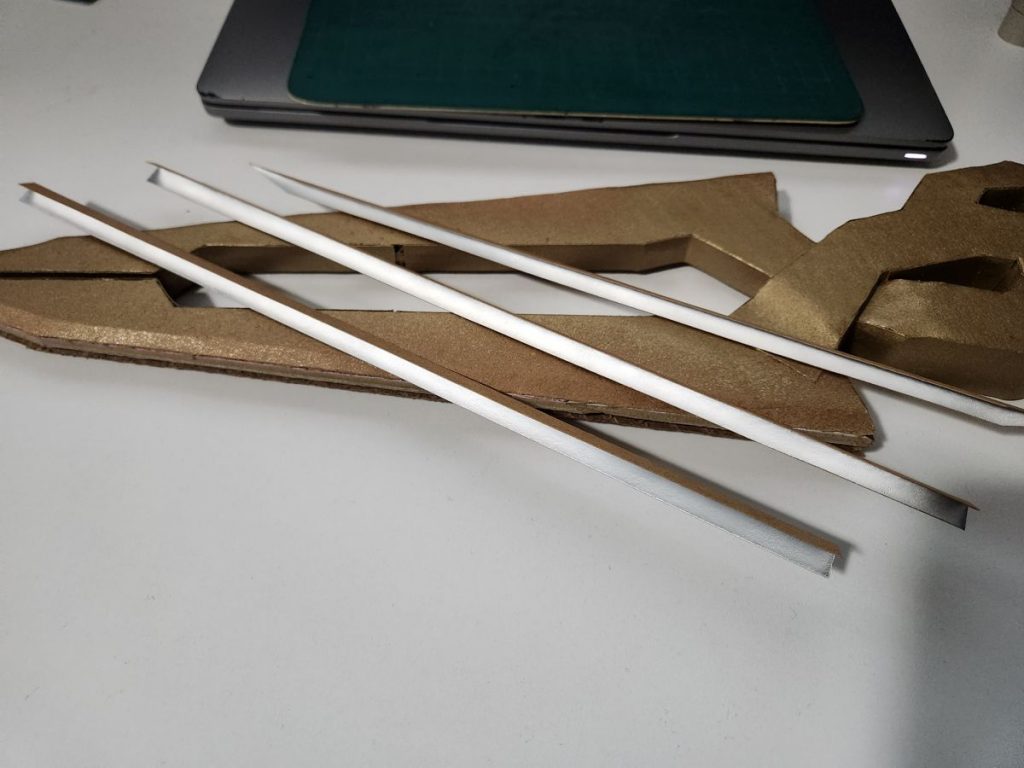
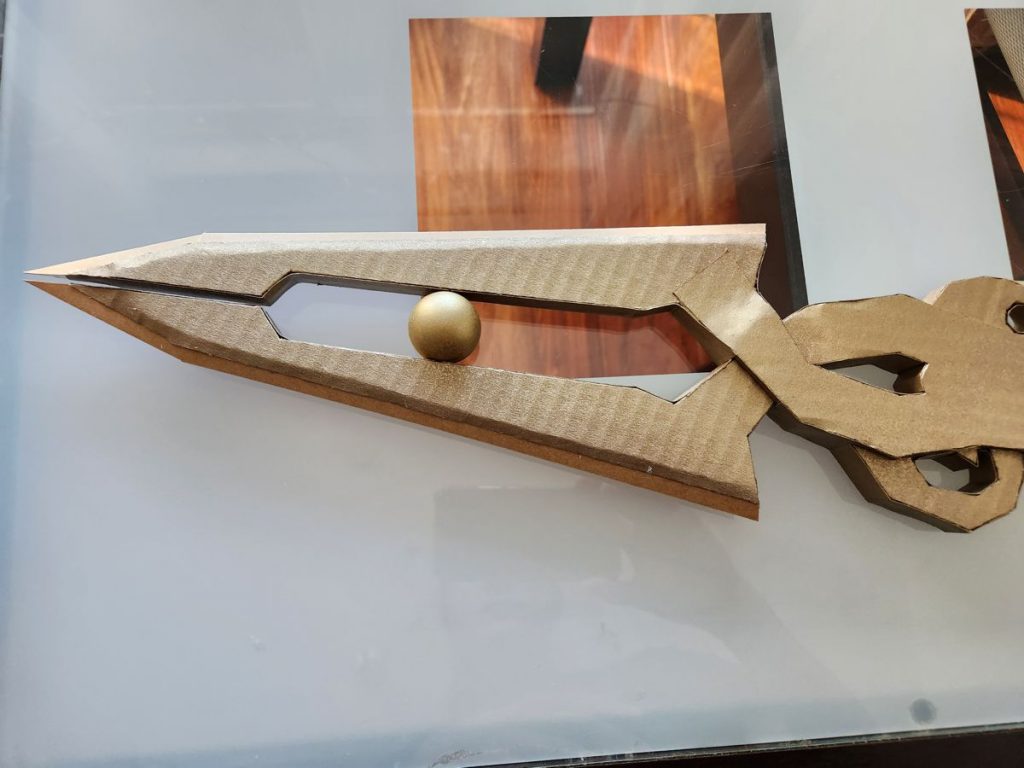
The Chinese saying “paint the dragon, dot the eyes” (畫龍點睛) means that the finishing touch to a masterpiece is what gives it life. In the case of this Hegemon’s spear, the blue gems and red tassels did the job. This part was 2-3% of the overall effort, but half of the coolness factor.
I spent a great deal of time browsing both Amazon and Ali Express for tassels, but the largest available product was still too dainty for my needs. So I had to get a crash course on tassel making and Chinese knotting before I could wrap up this project.
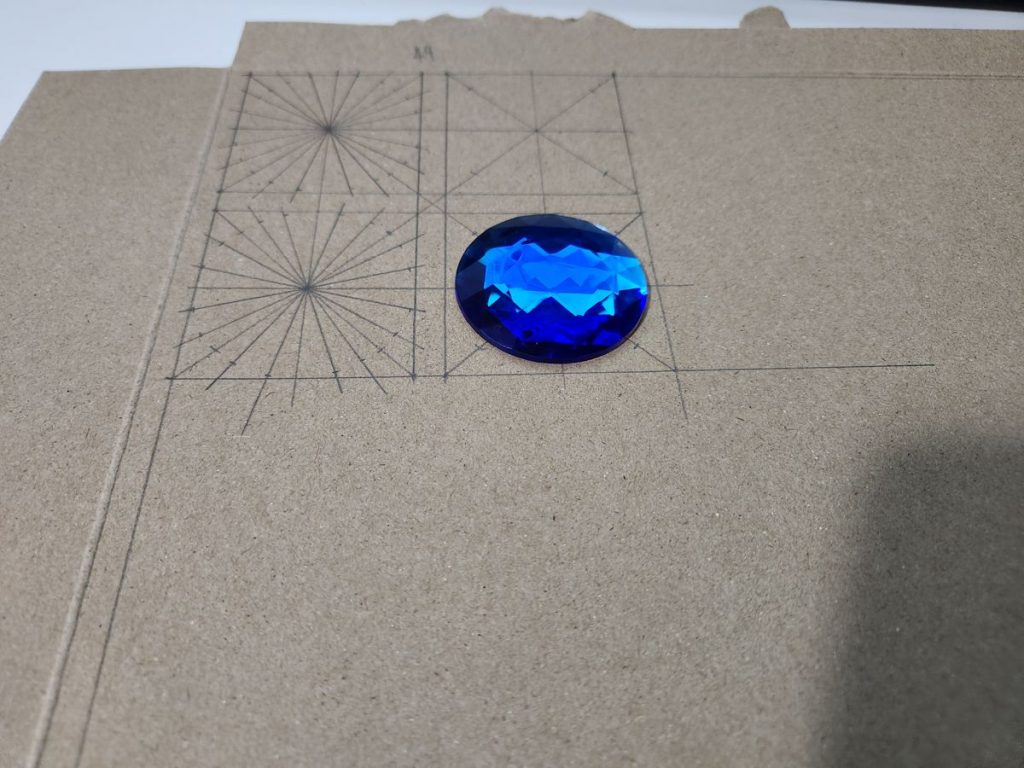
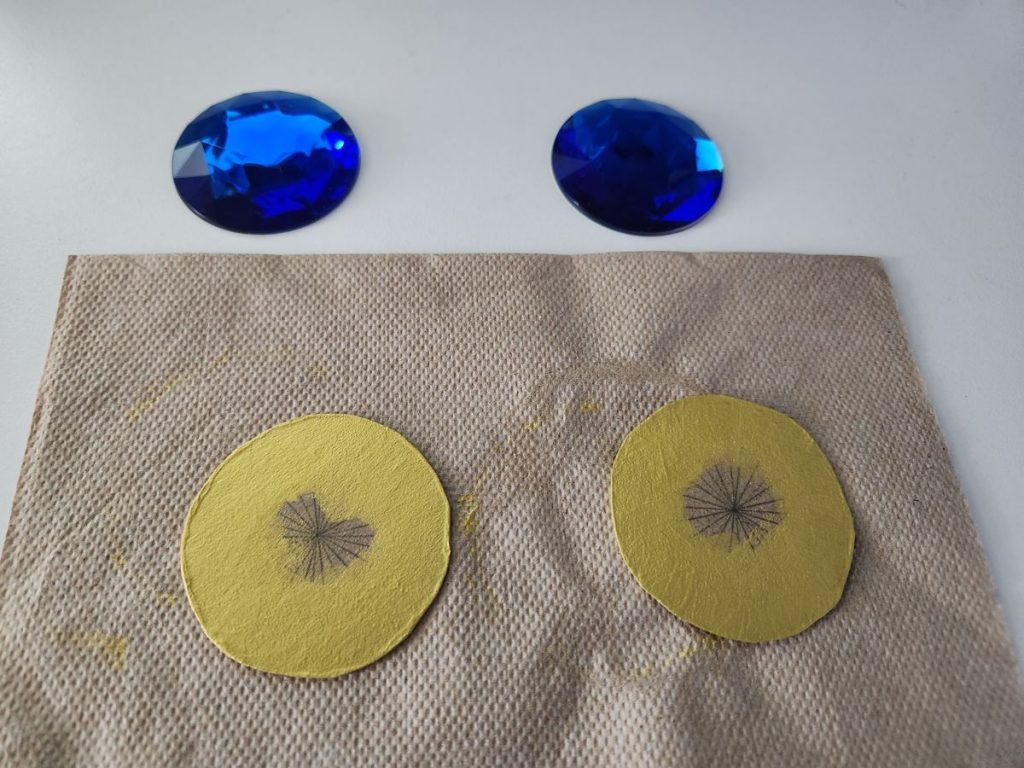
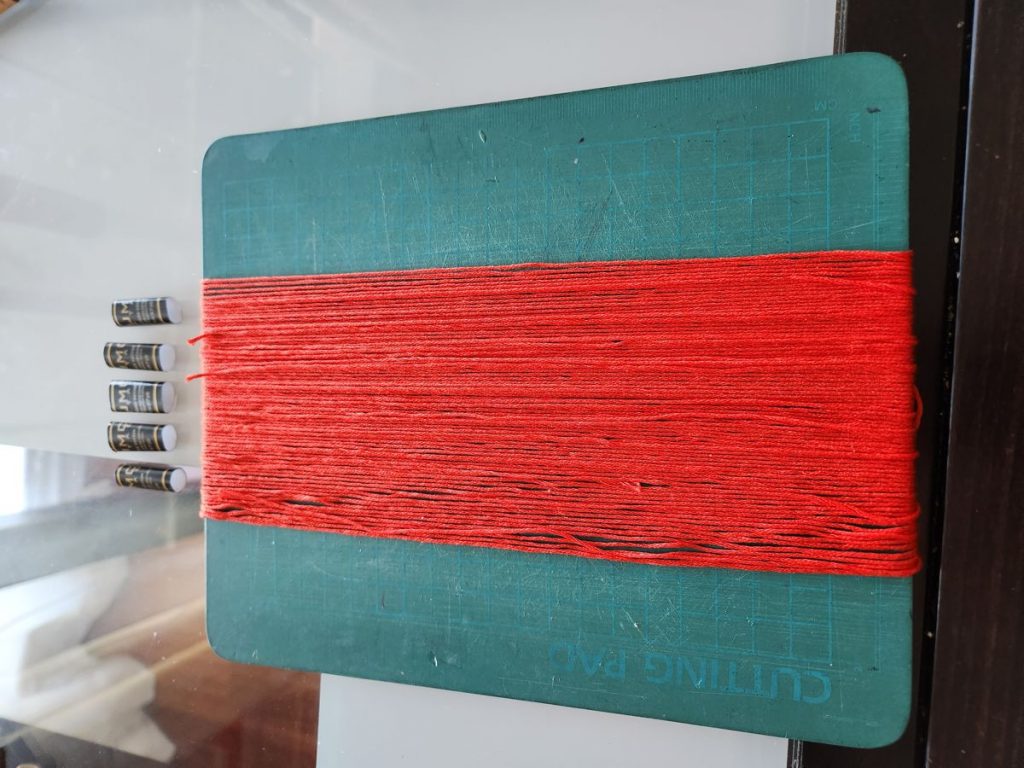
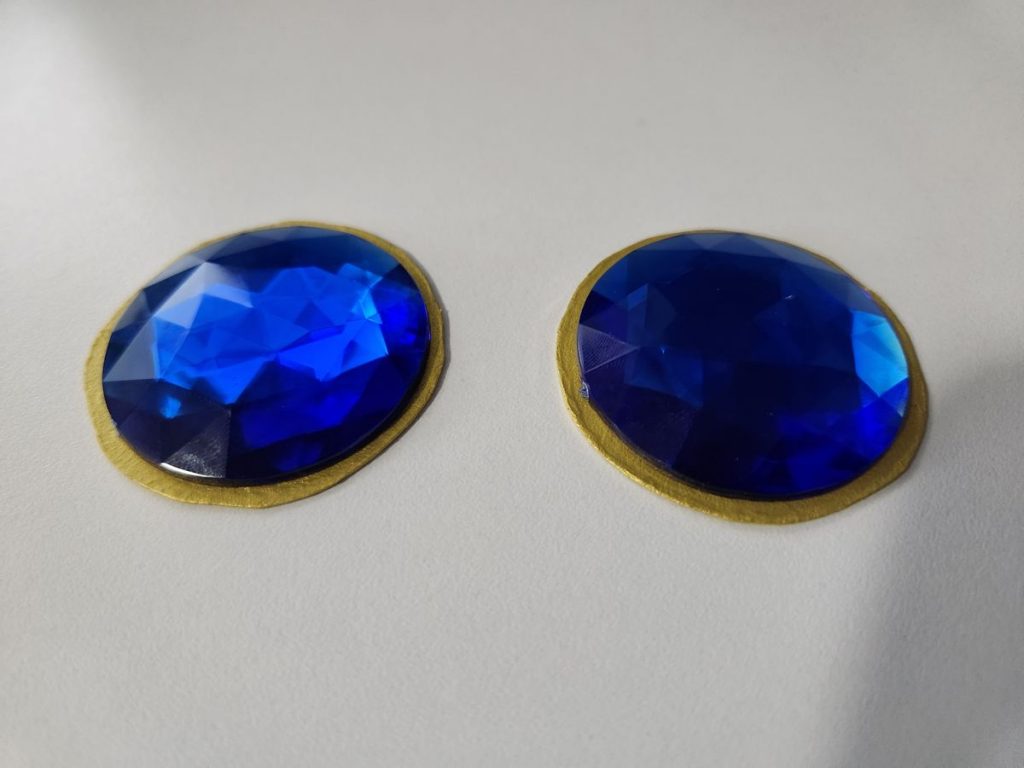
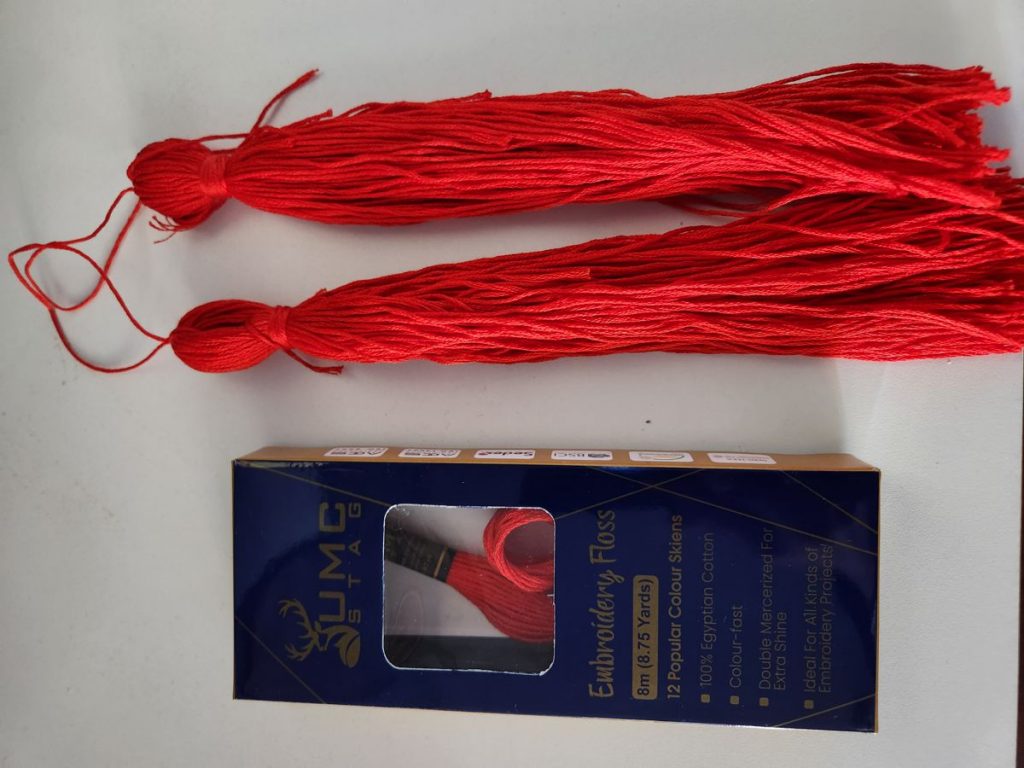
It wasn’t a ton of work to go from the forged spear head to the fully decorated version, but it looked progressively more expensive.

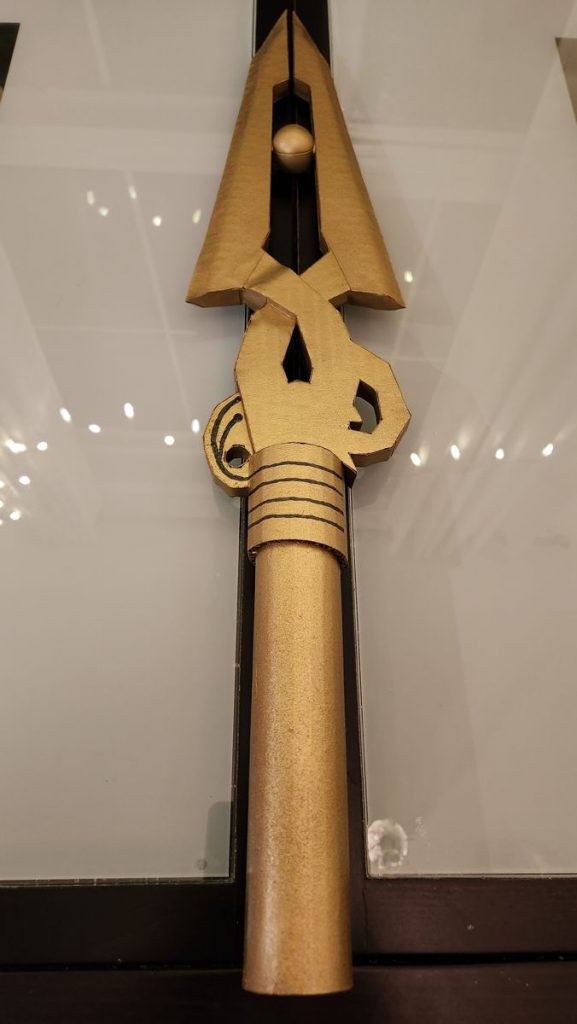
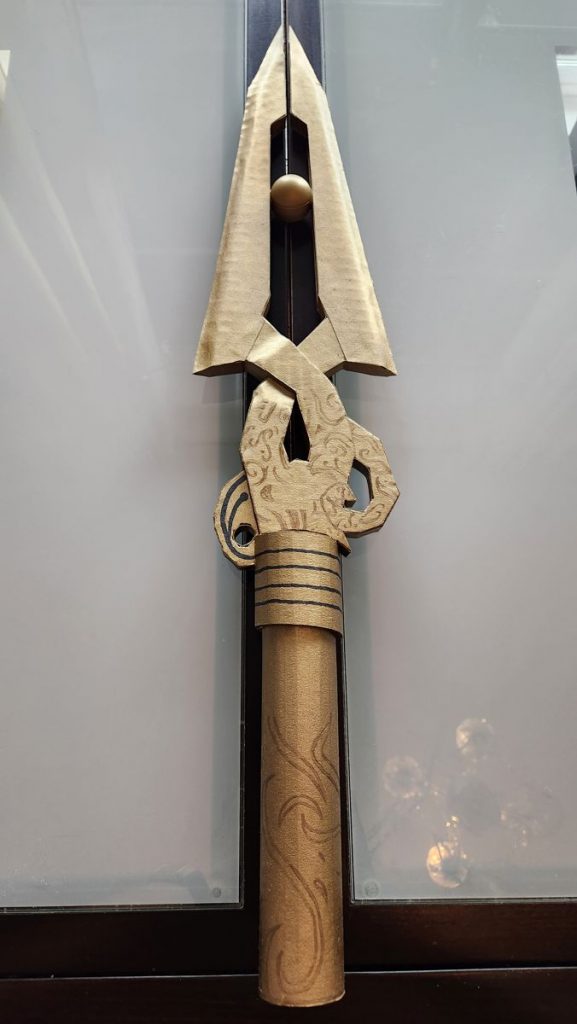
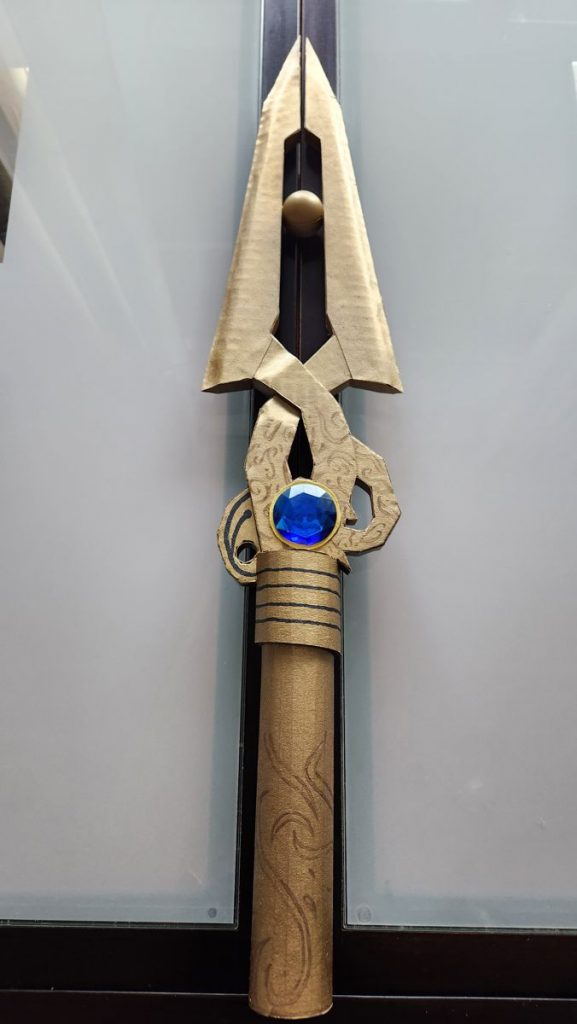
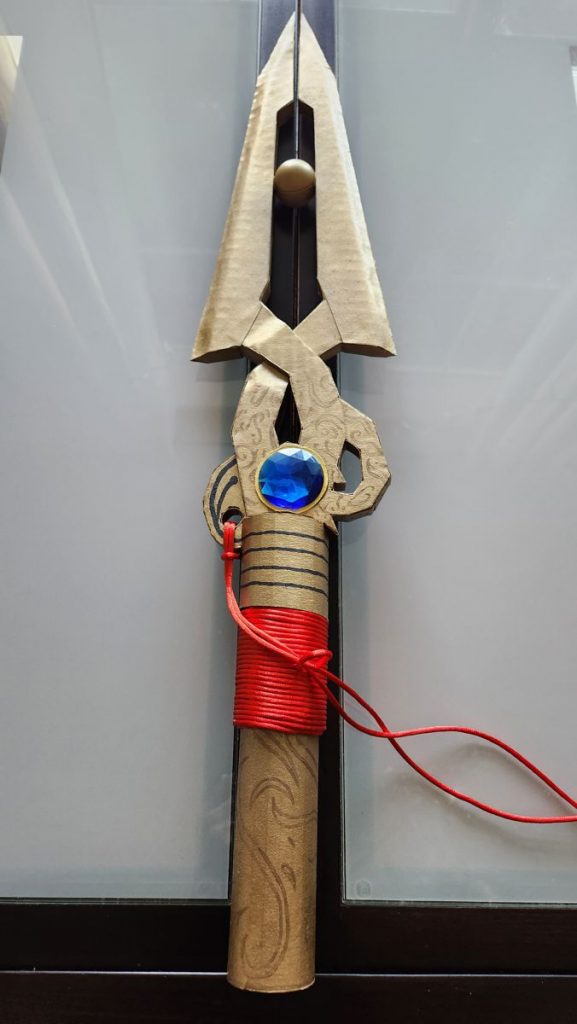
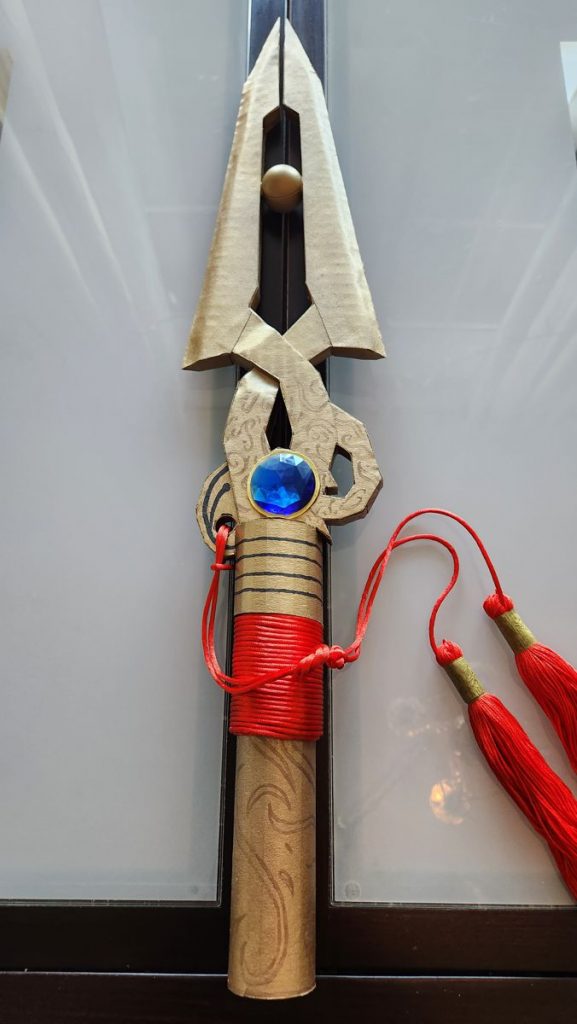
The finished spear head standing tall on my desk.
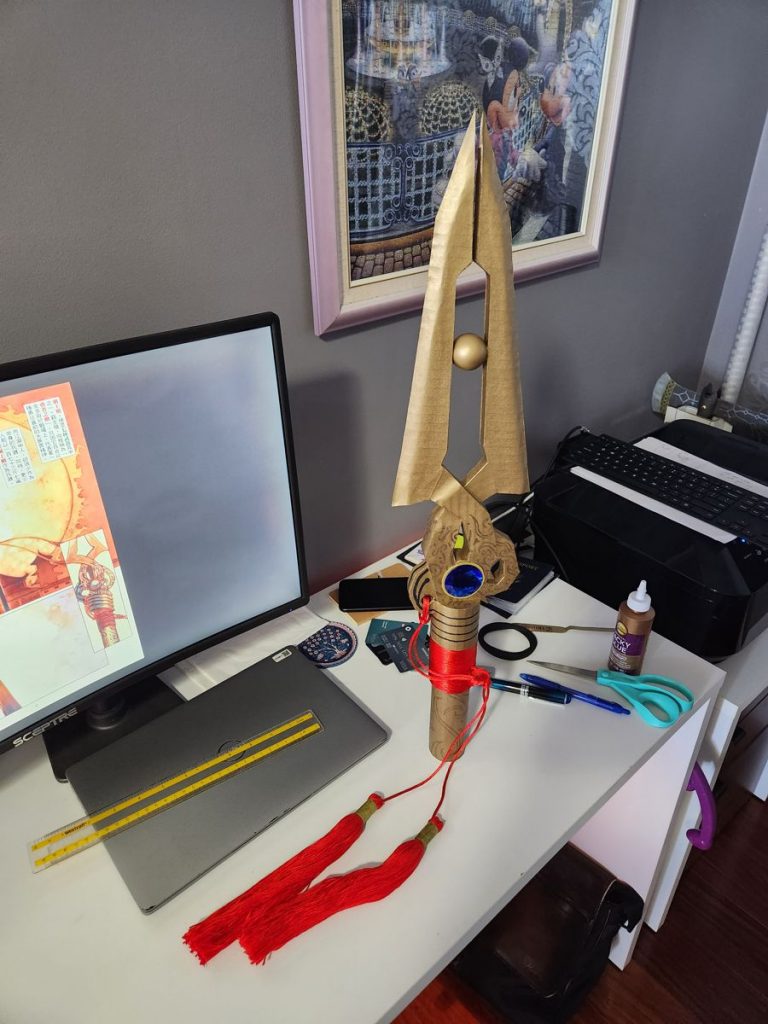
Putting It All Together
Here’s the base version of the spear before decorations:
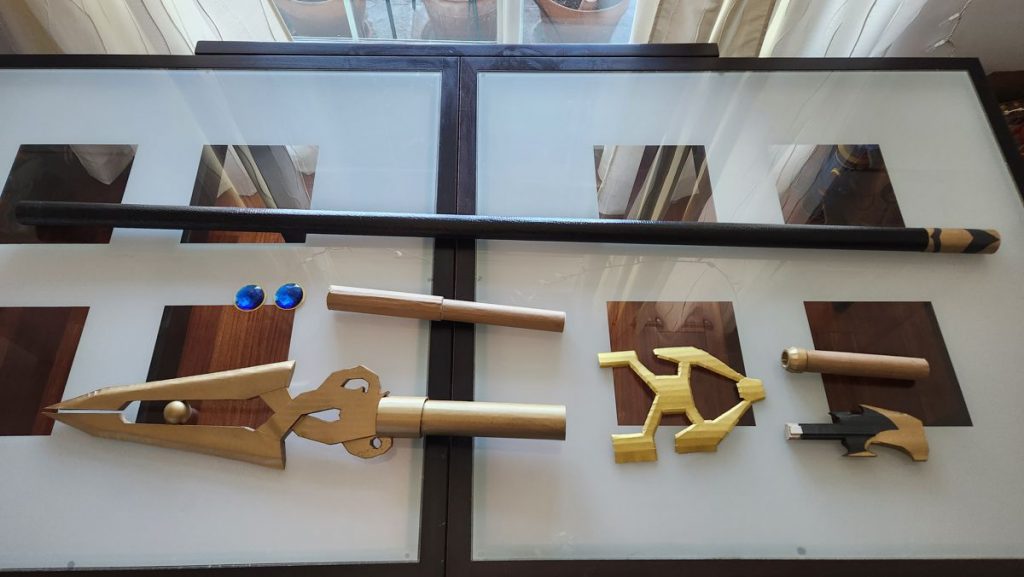
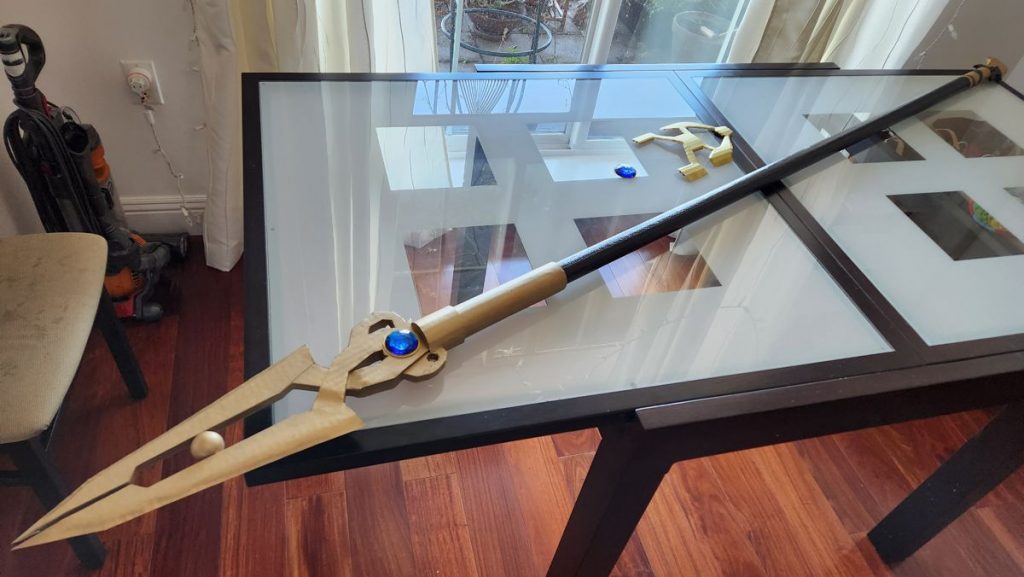
And here’s the finished product:
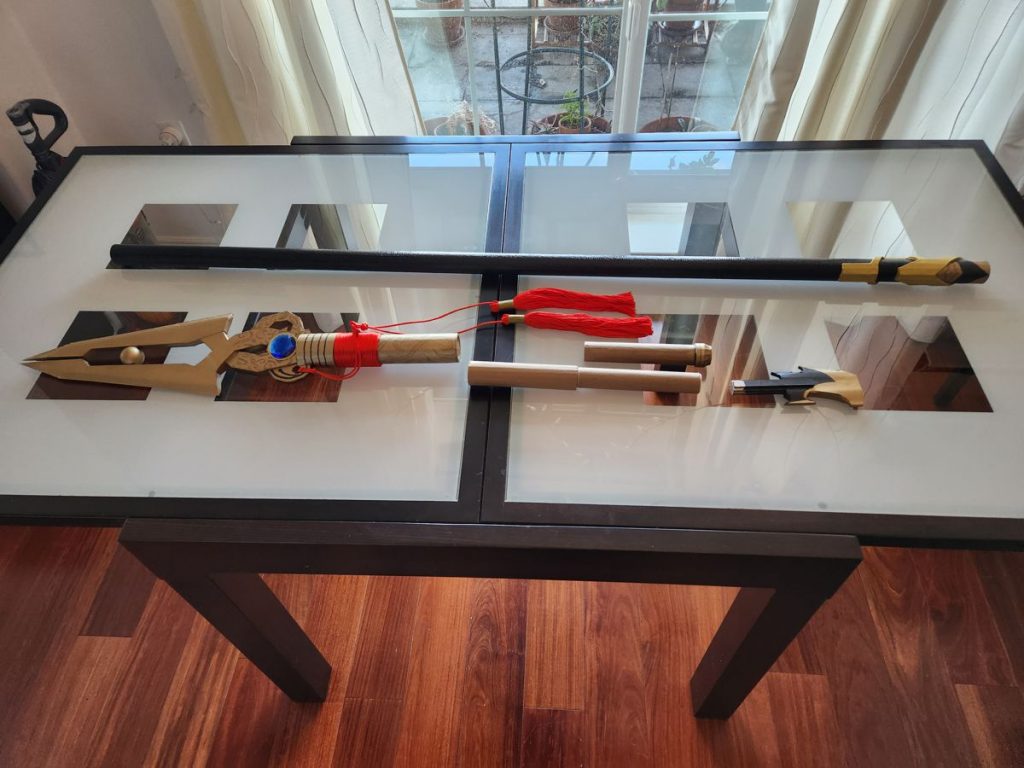
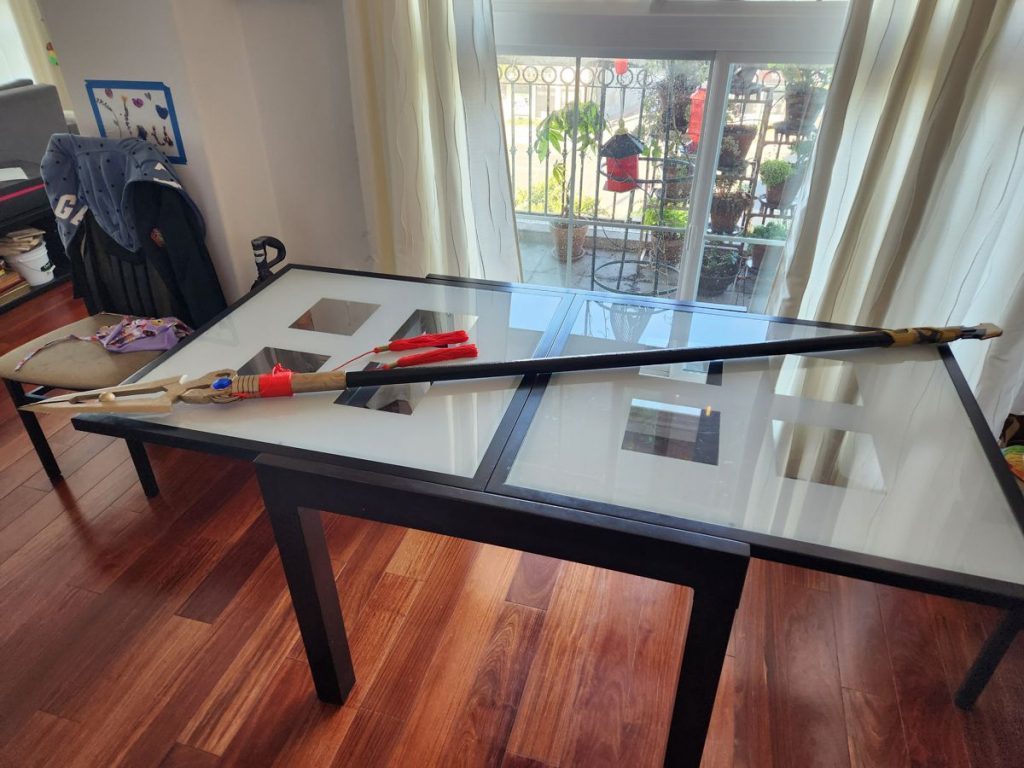
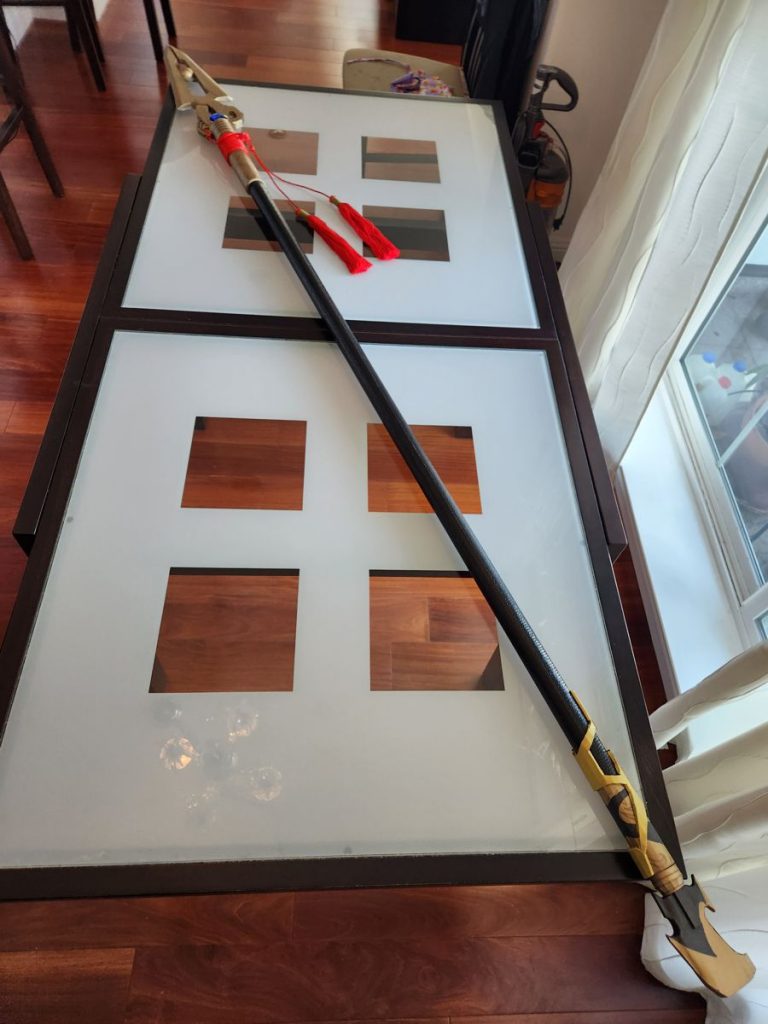
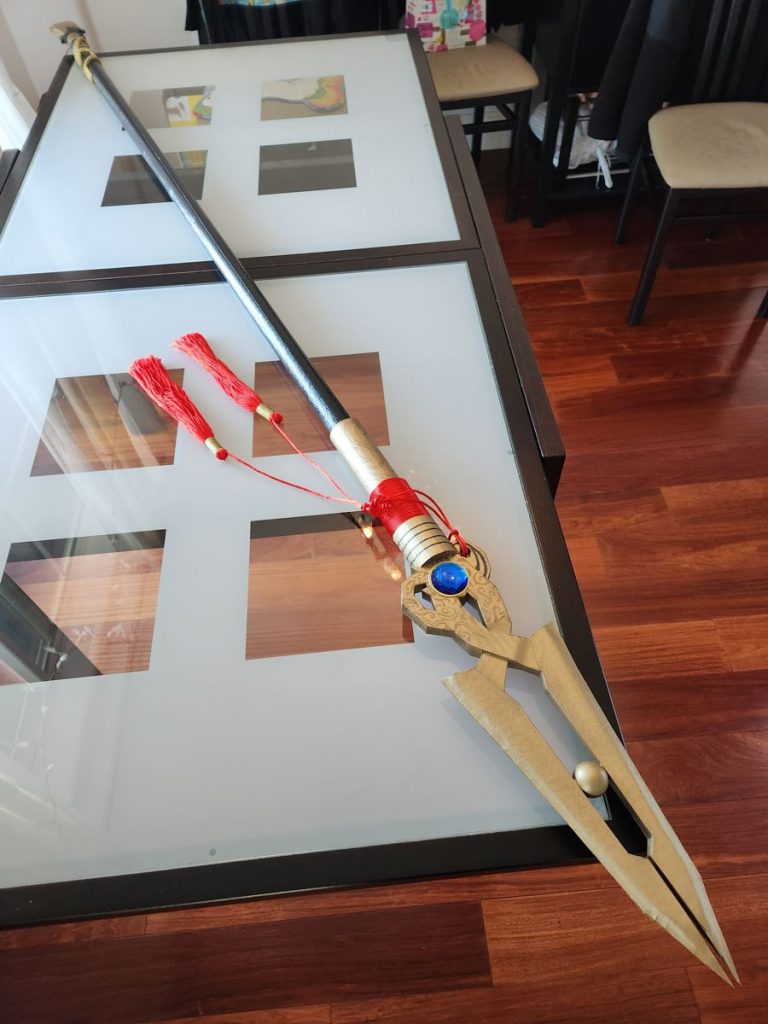
I wished I had tracked my time spent on this project because it was a lot. End to end took just under a month, but I reckon it was no fewer than 50 hours of hands-on work and dozens more of brainstorming. The result was great though and I’m super proud of it…
My Hegemon’s Spear stands at 7’2″. I can’t lift it much off the floor without it poking the ceiling. For scale:
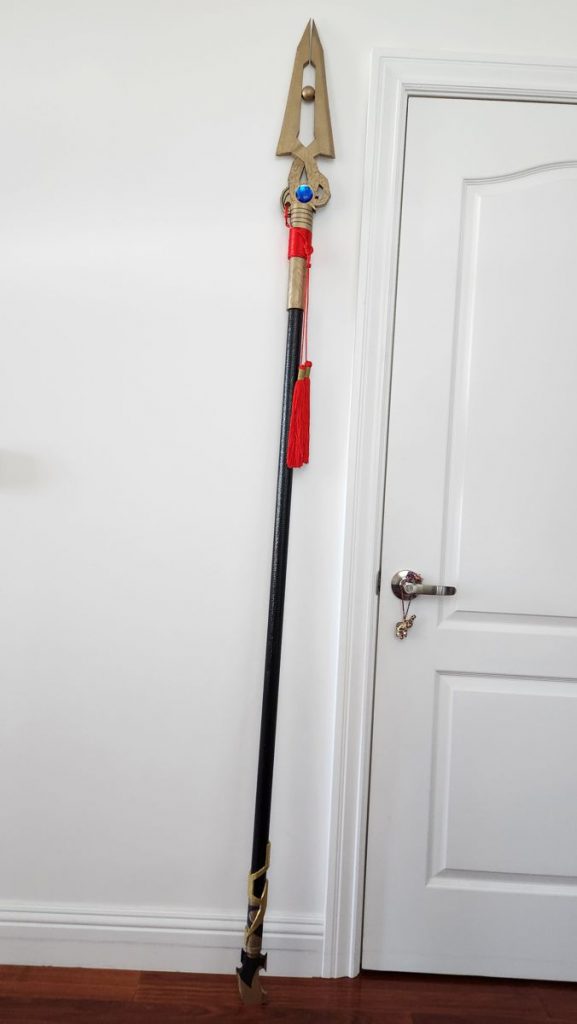
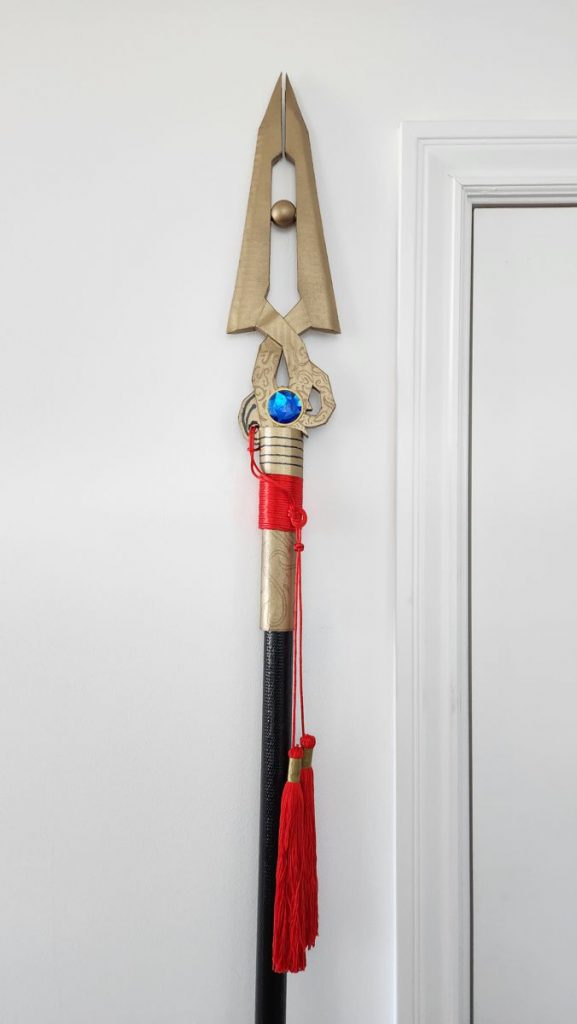
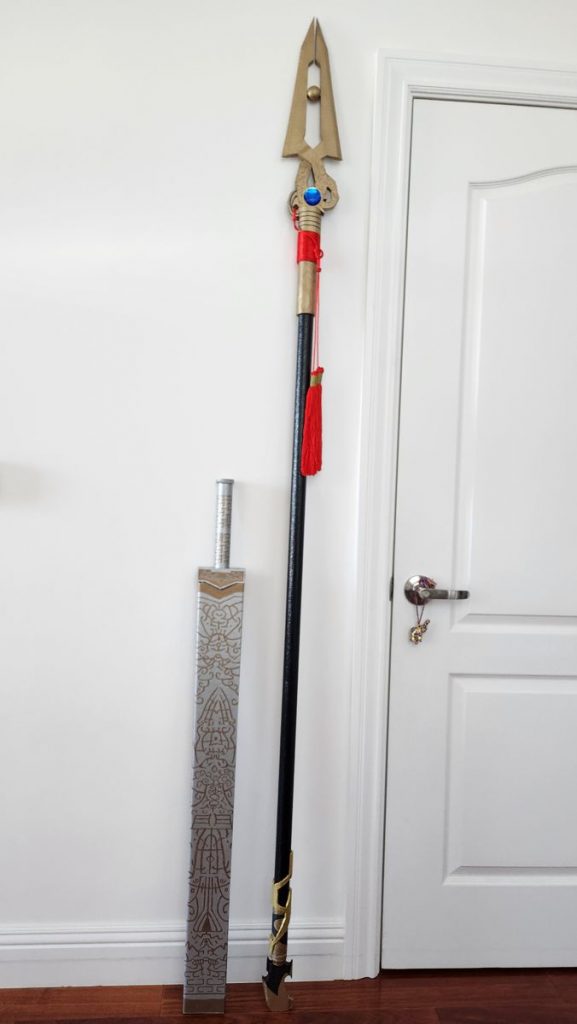
Life-sized replica vs. miniature replica:
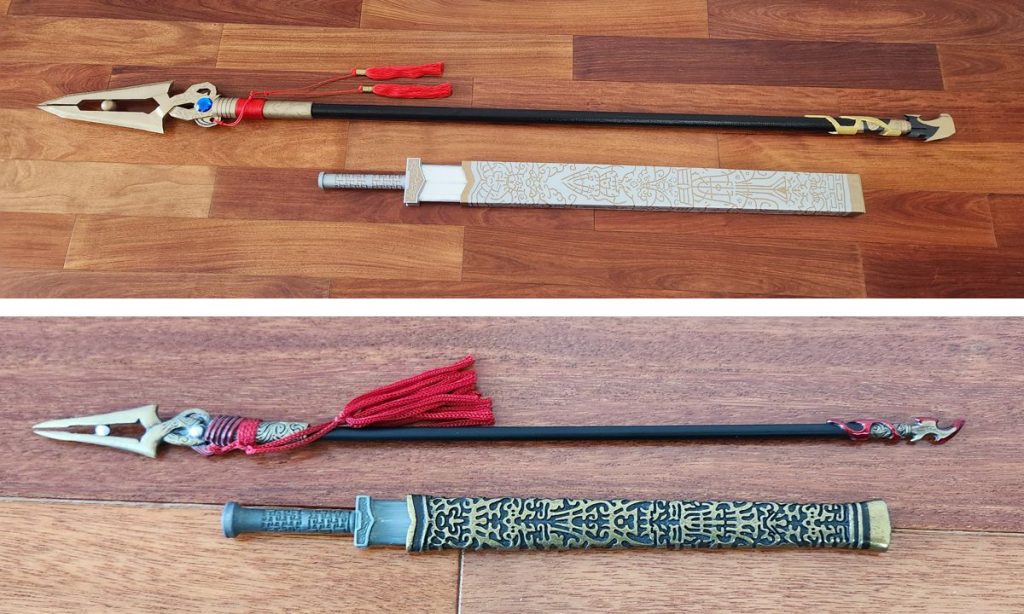
The Forge of 2023:
- Project Remnant Sword – 殘劍 Can Jian
- Project Vibrant Sword – A Homemade Lightsaber Experiment
- Project Hegemon’s Spear – 霸王槍 Ba Wang Qiang
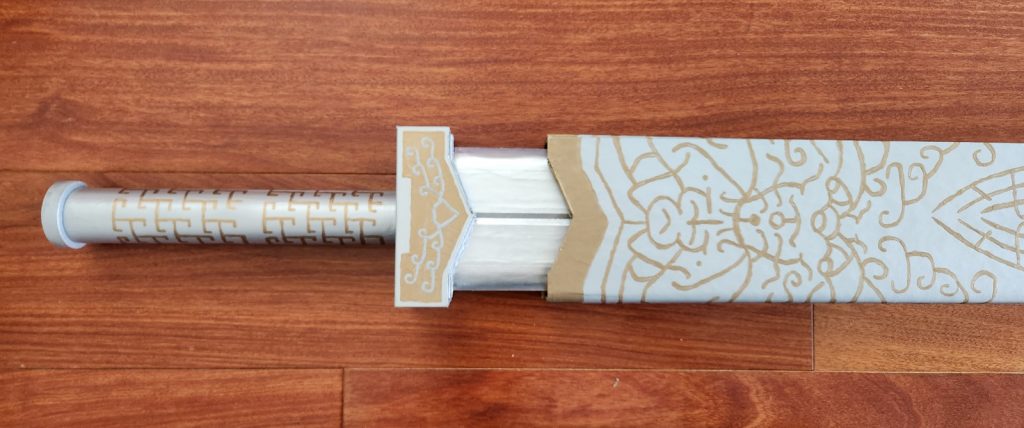
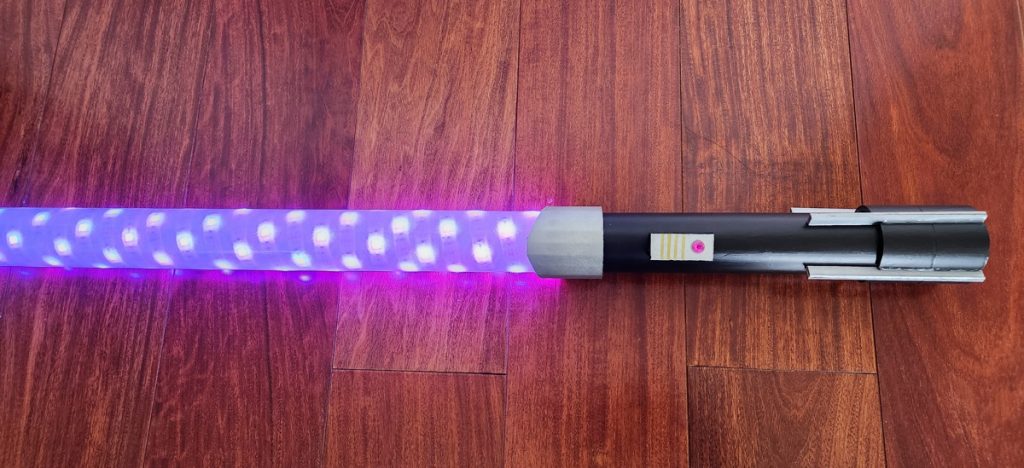
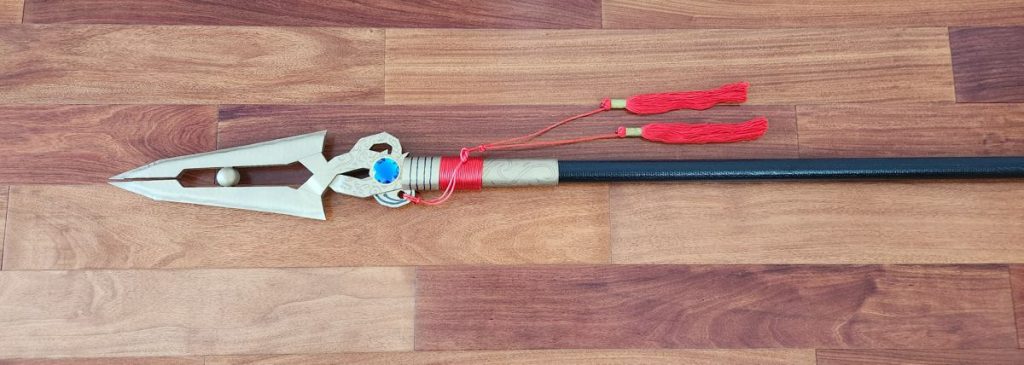
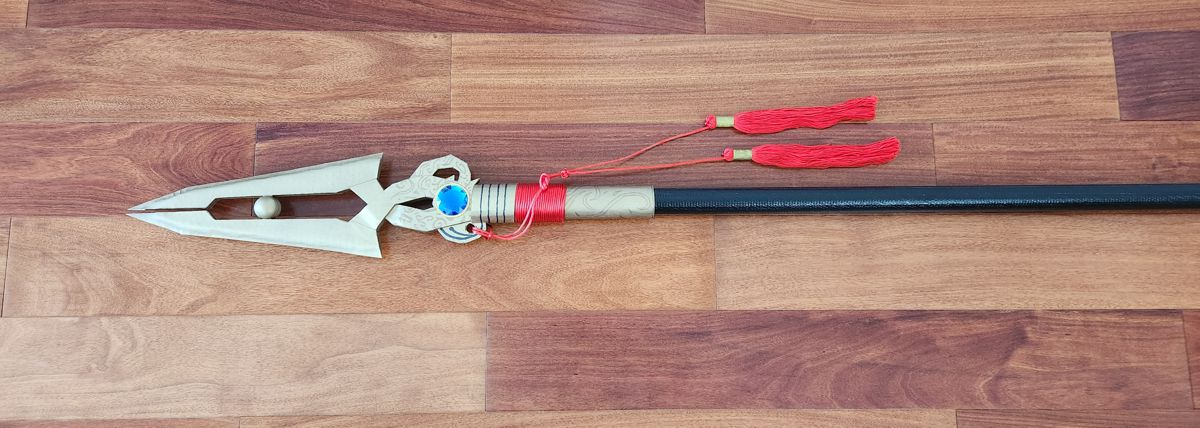
Project Curved Saber – 驚寂 Jing Ji – Peter's Blog
December 17, 2023 at 2:07 pm[…] Can Jian as my starting point was in part because it had a simple shape. By the time I finished Hegemon’s Spear, though, I had developed techniques that could greatly expand the scope of my work. My hands […]
2023 Year In Review – Peter's Blog
January 2, 2024 at 3:22 am[…] PVC pipes, turning them into a Qin sword from a movie, a light saber from the Star Wars universe, a large spear from a manhua, and a curve saber from another manhua. With each project, I learned a little more about the […]